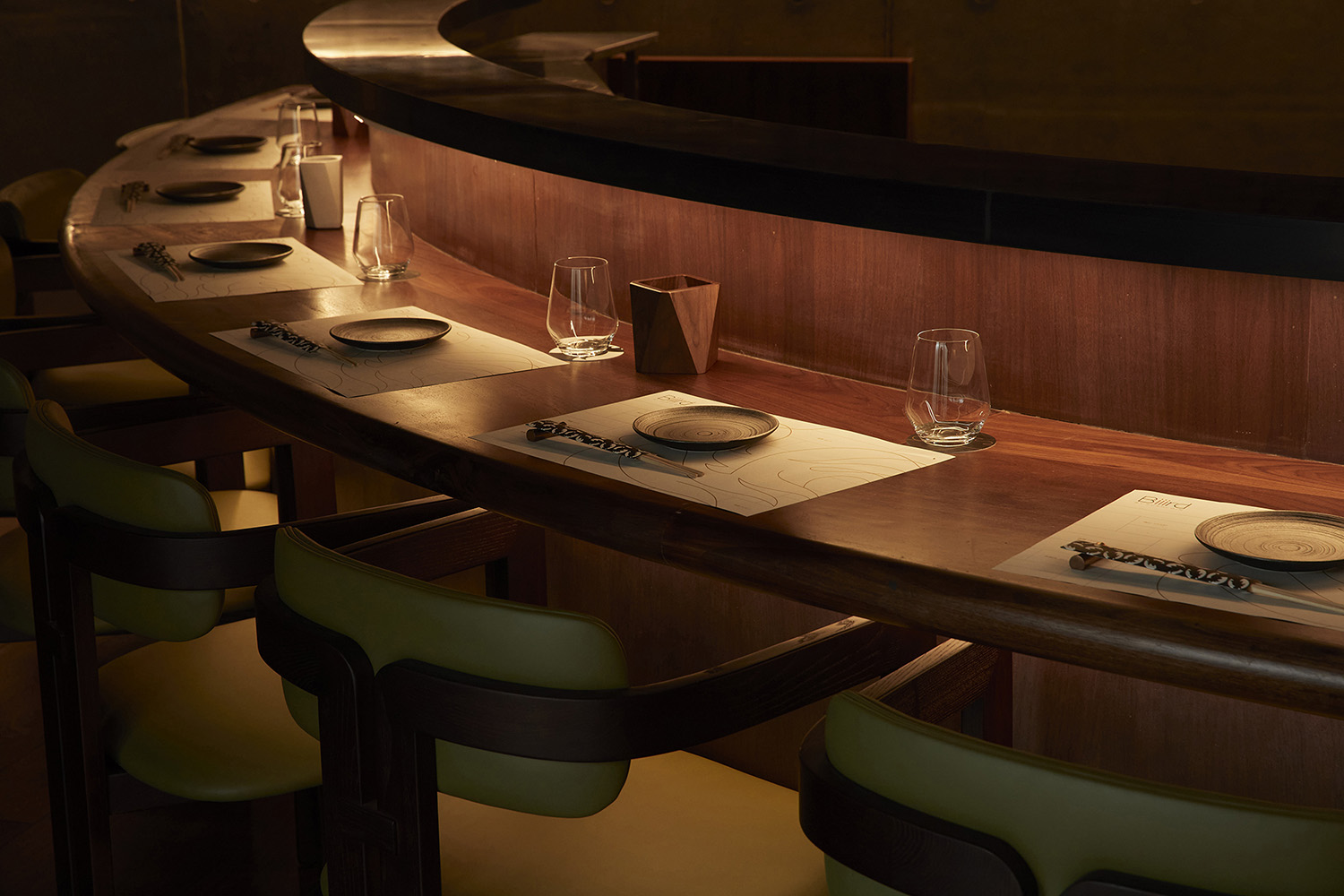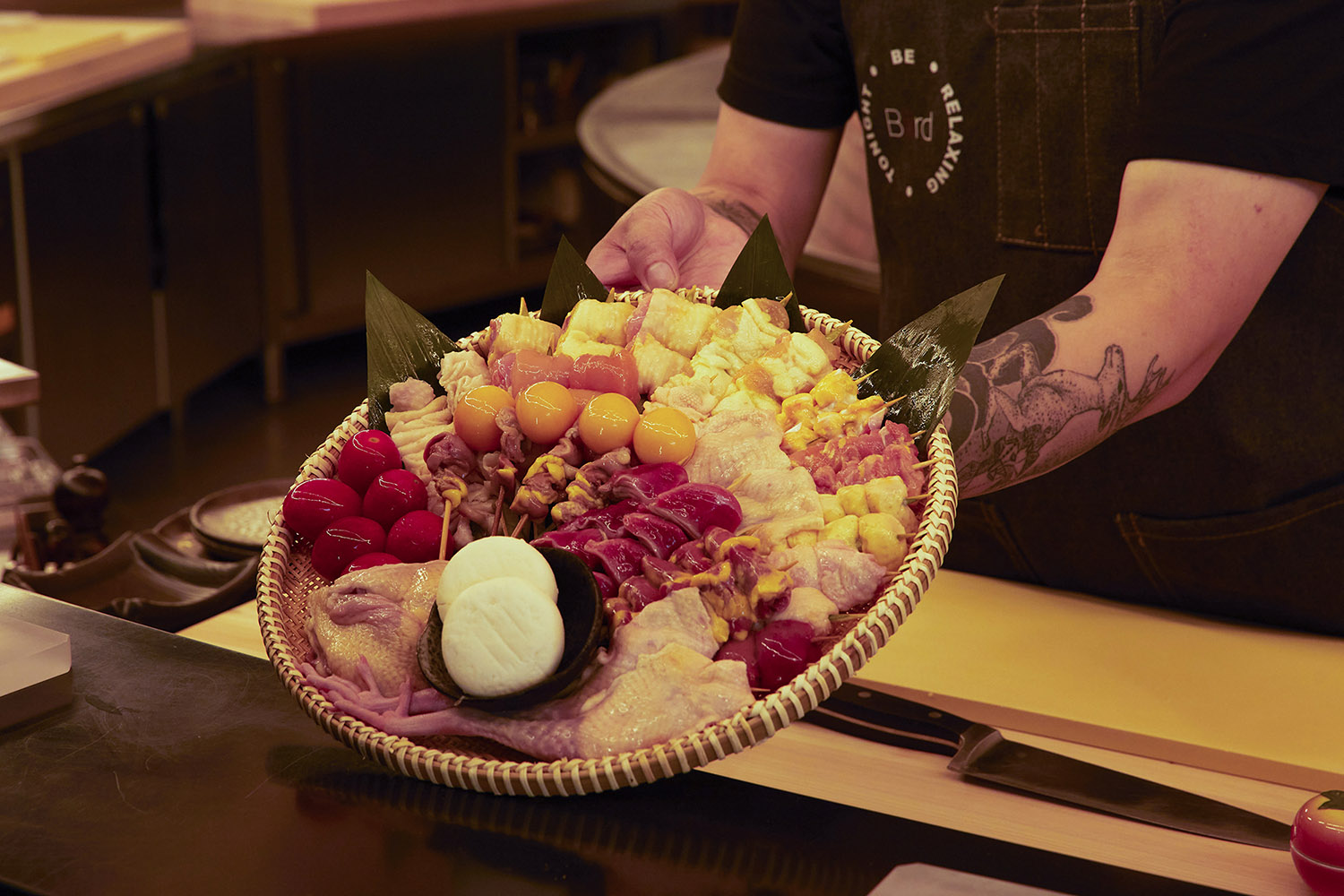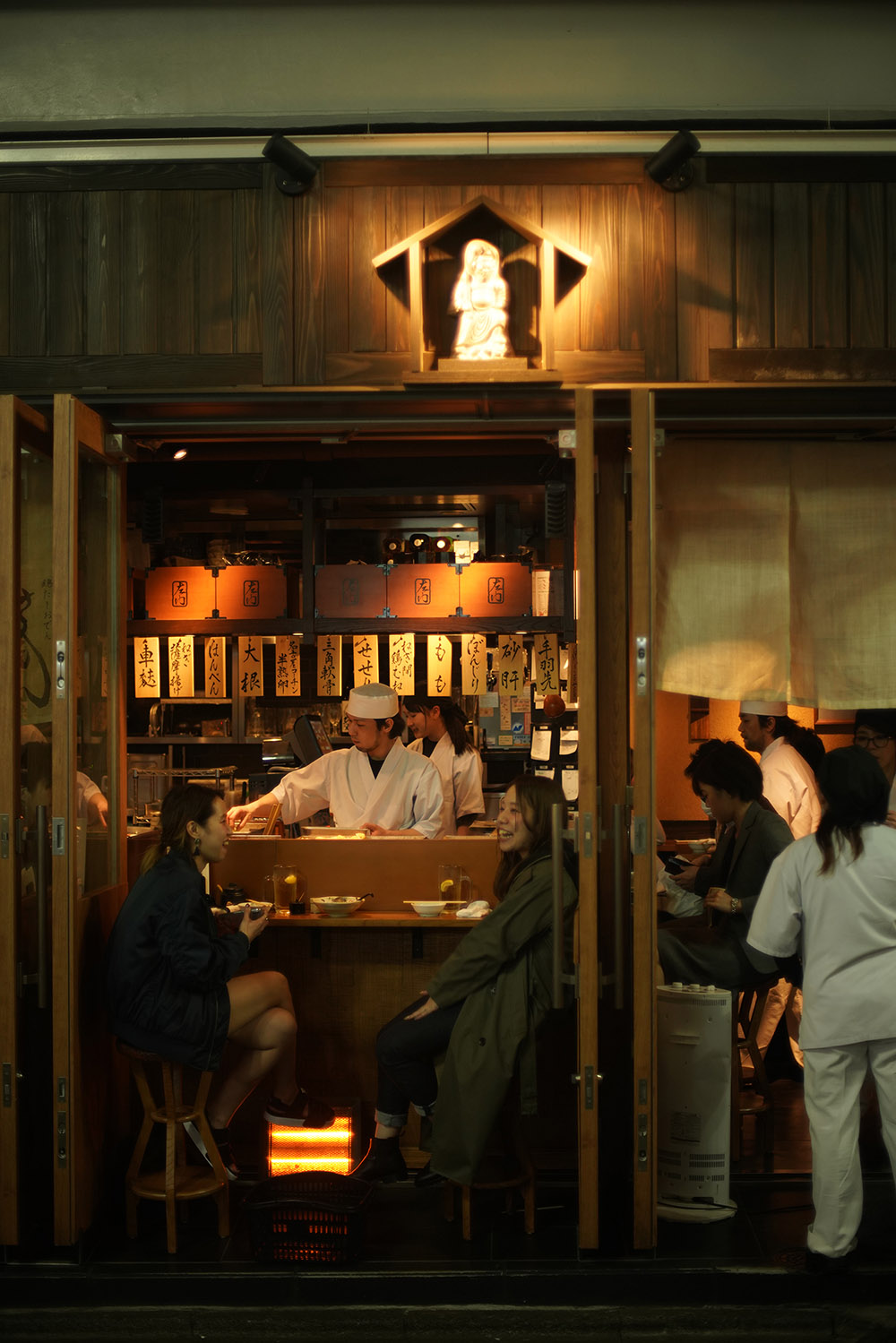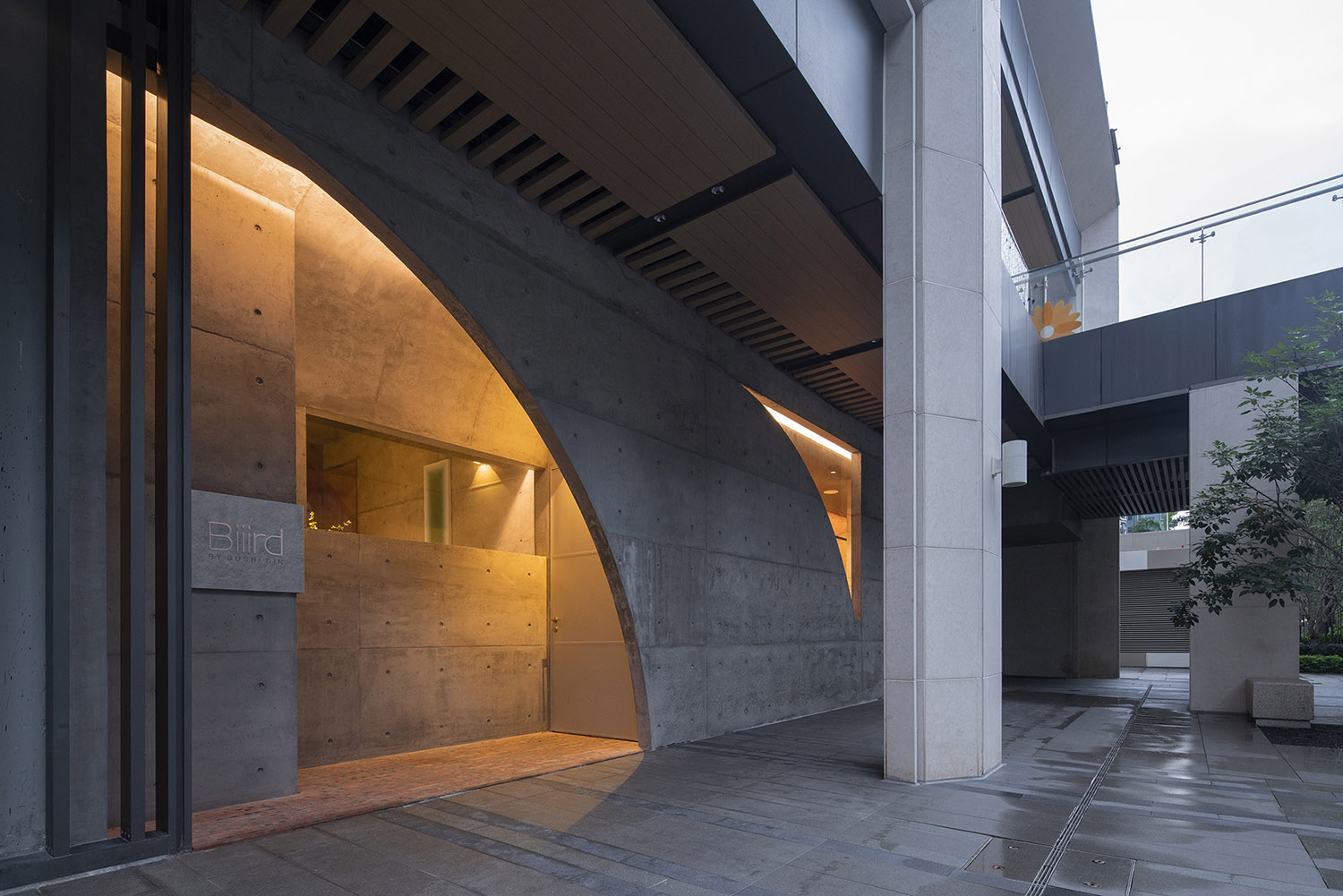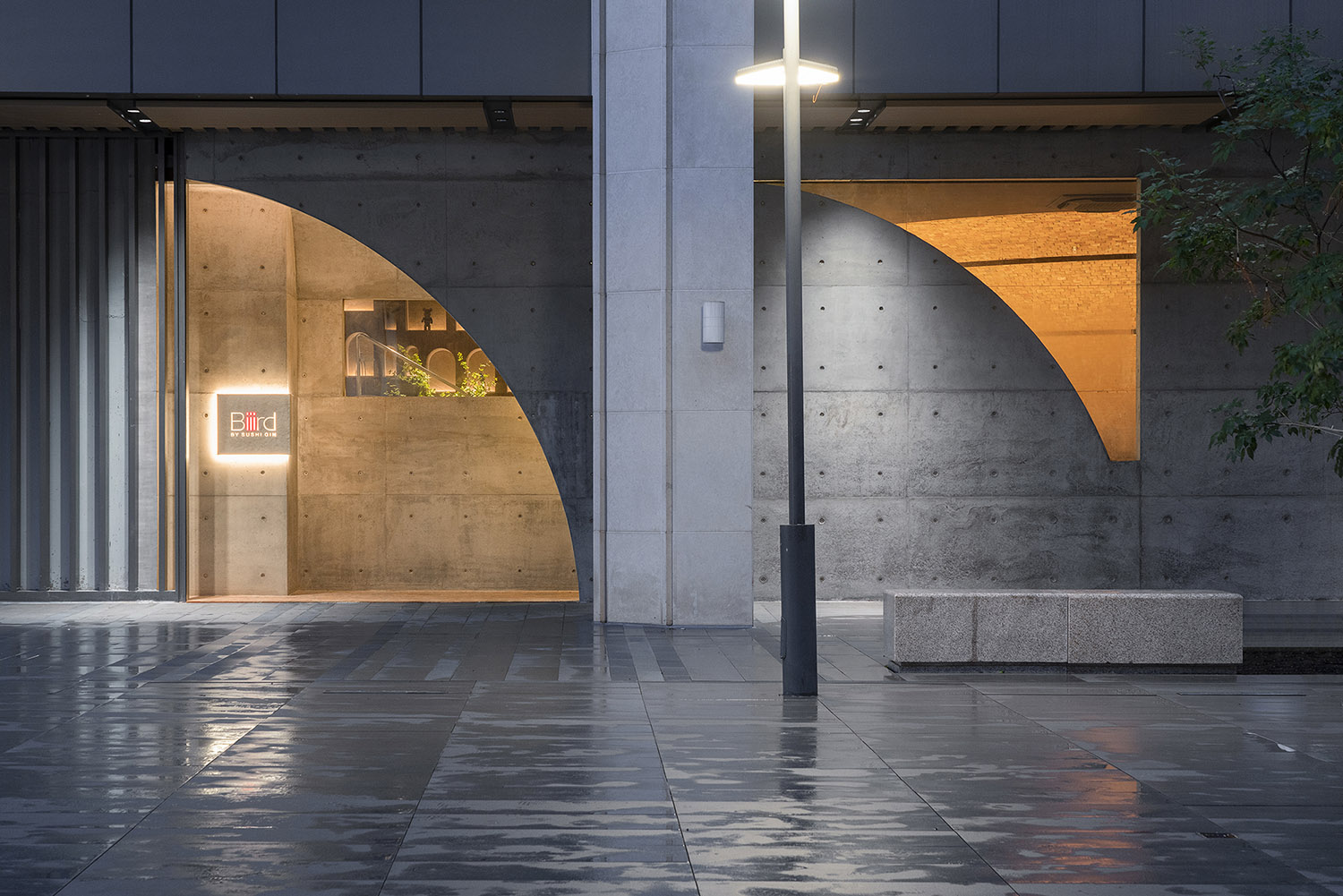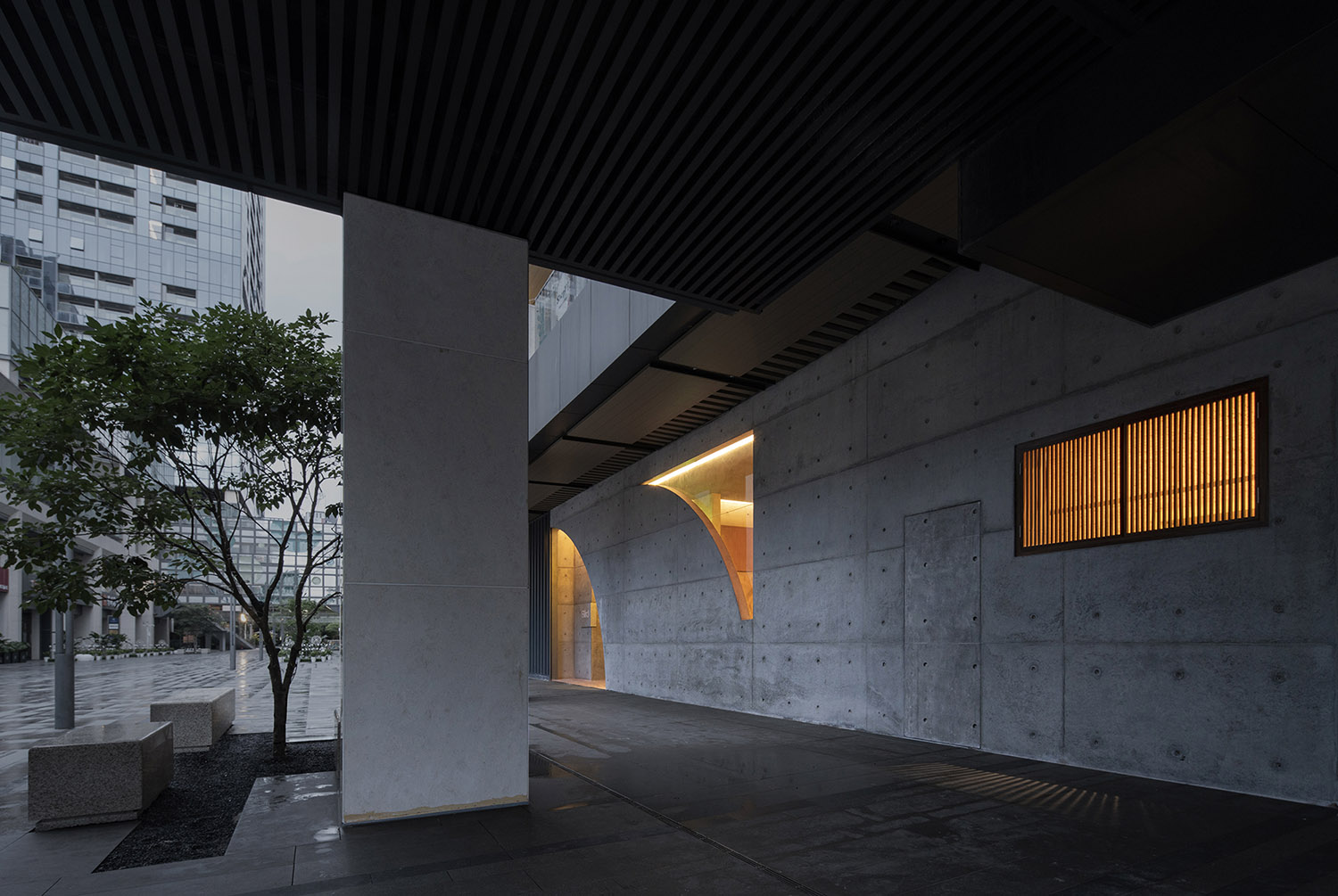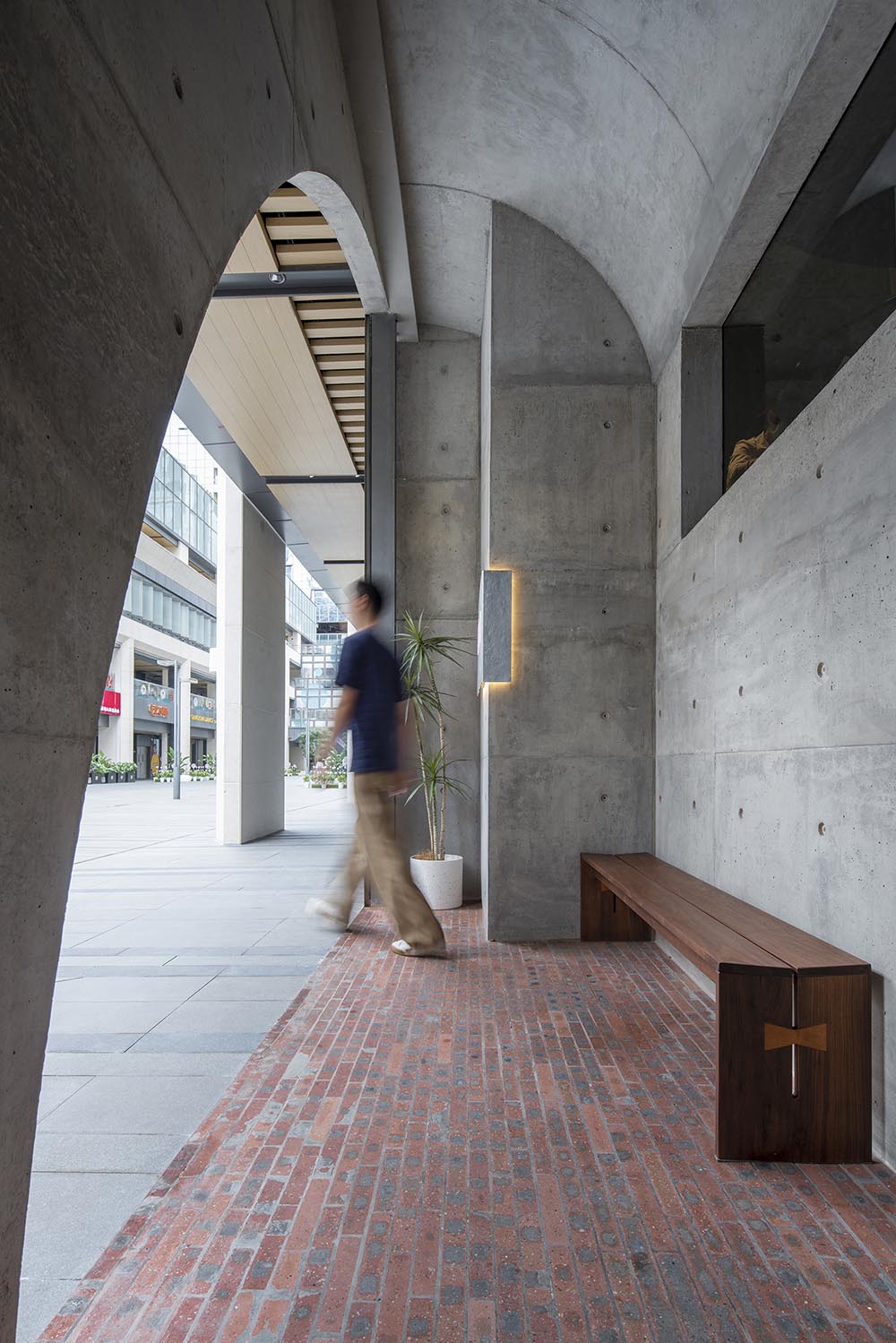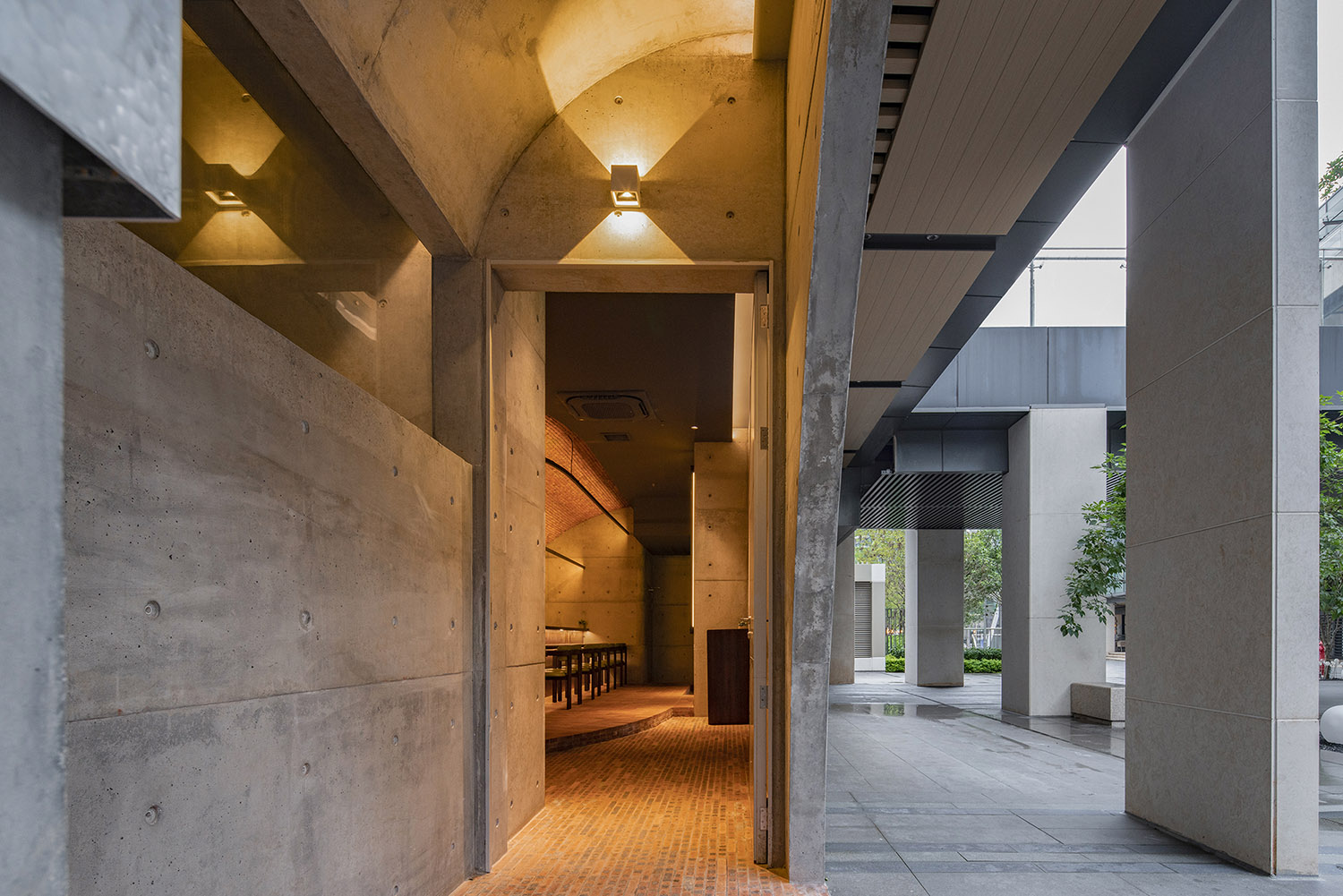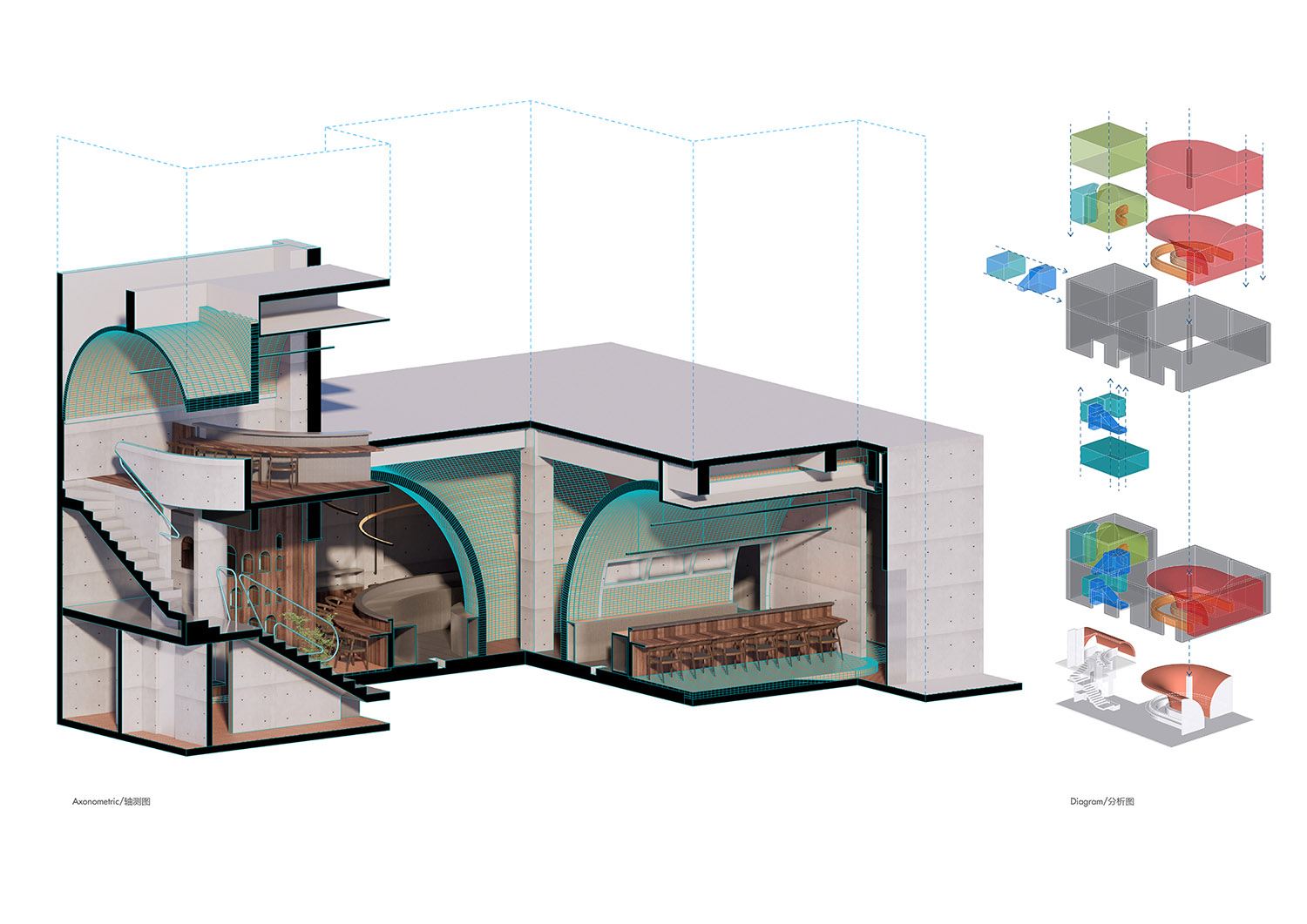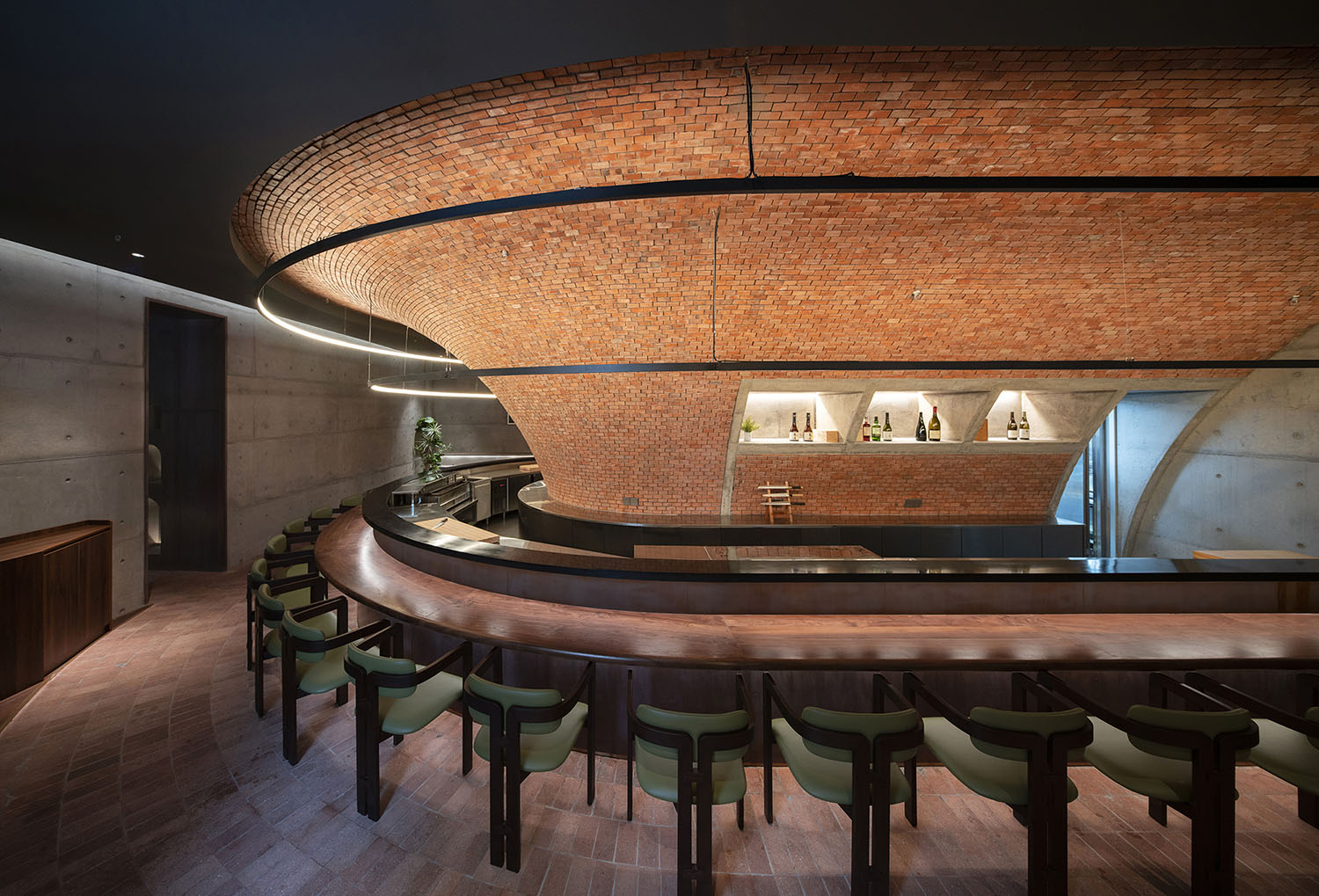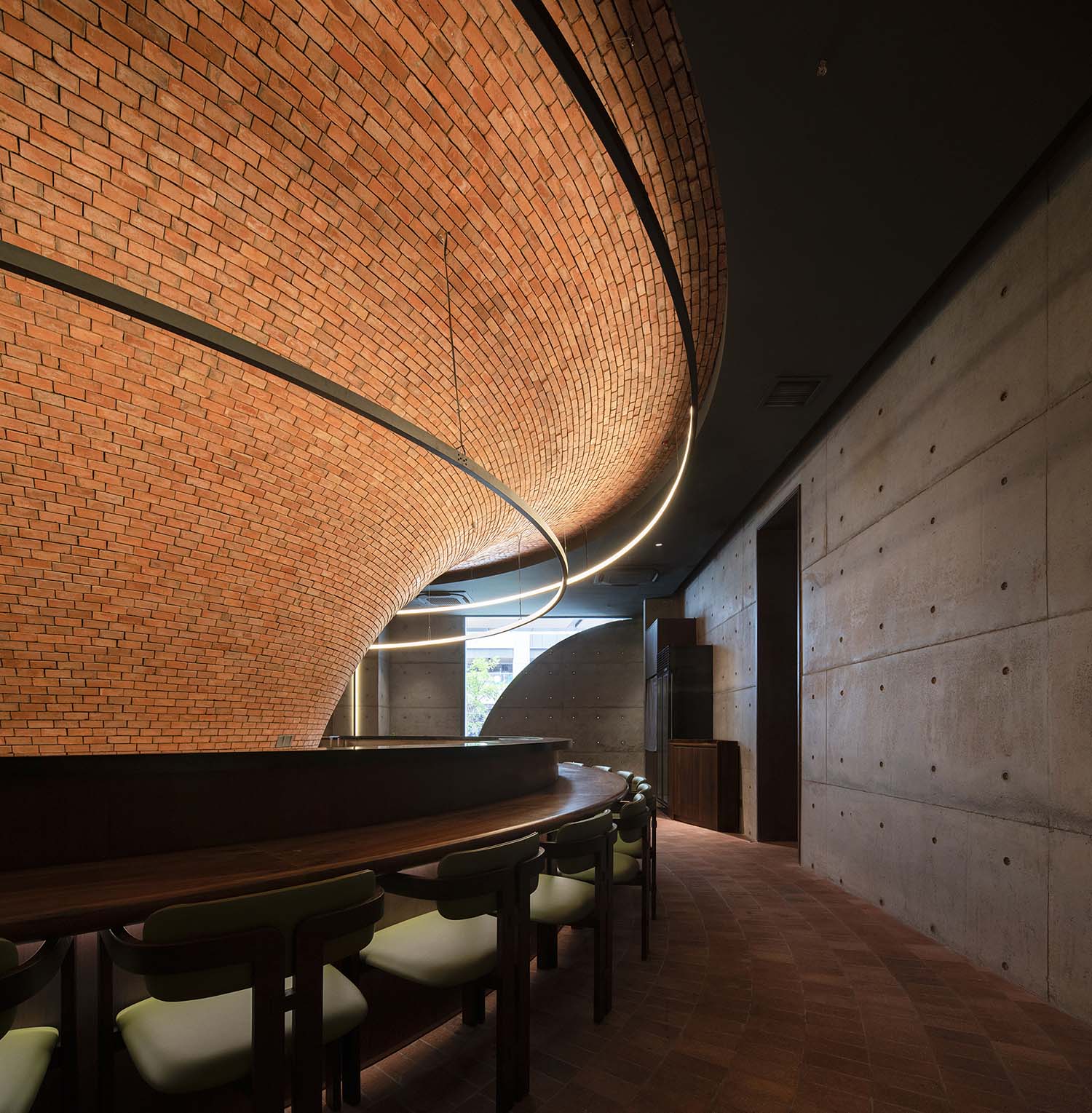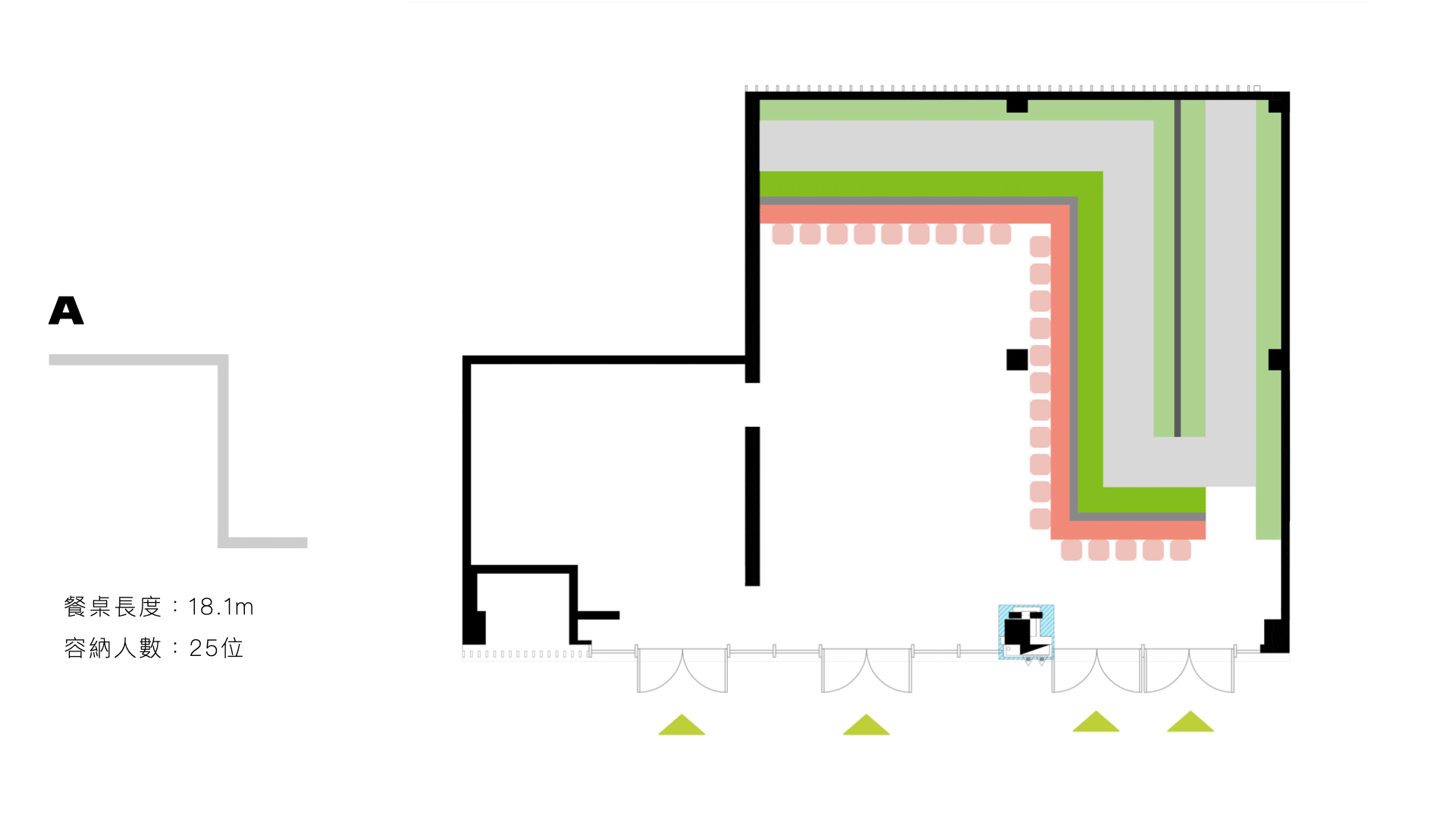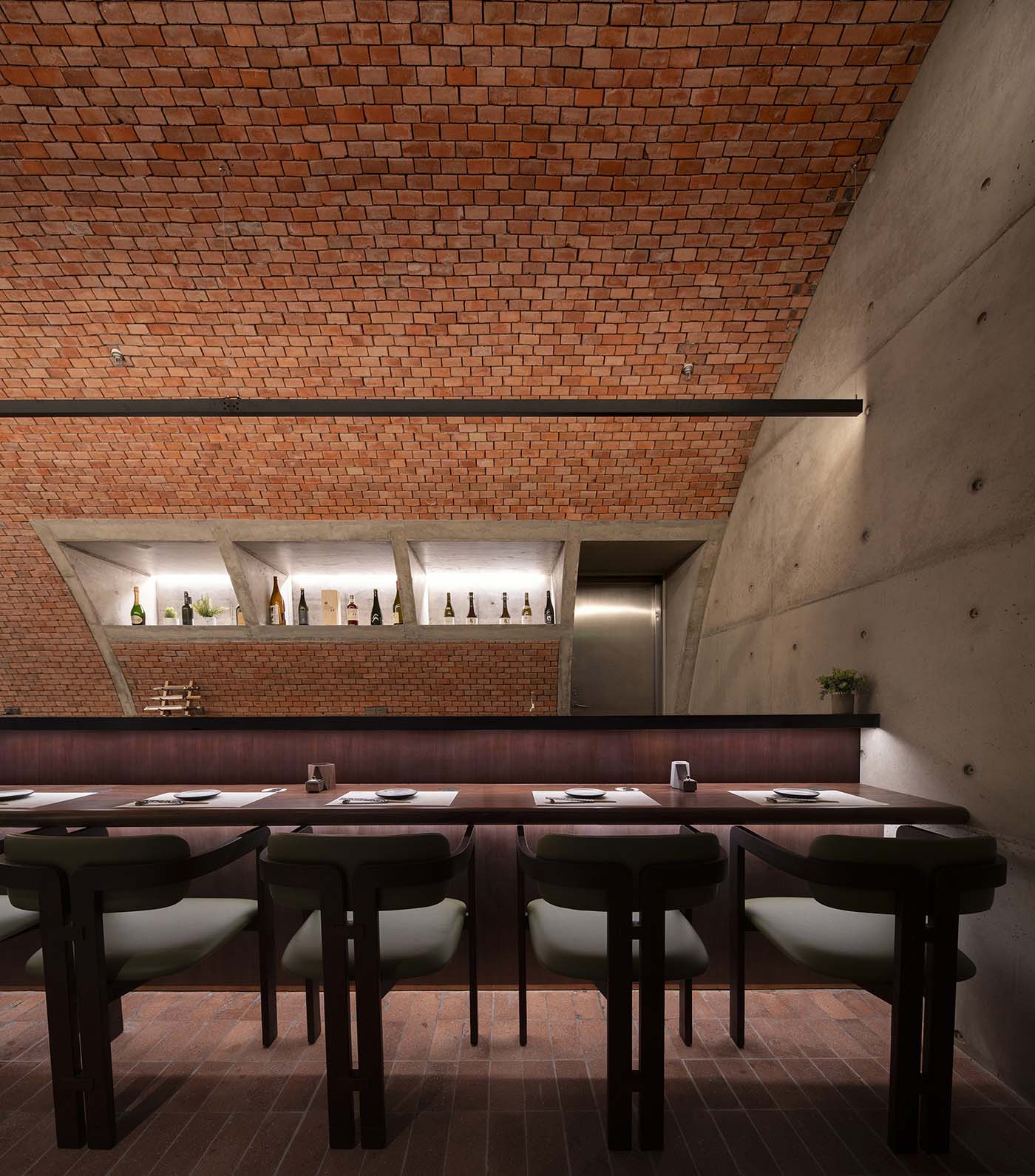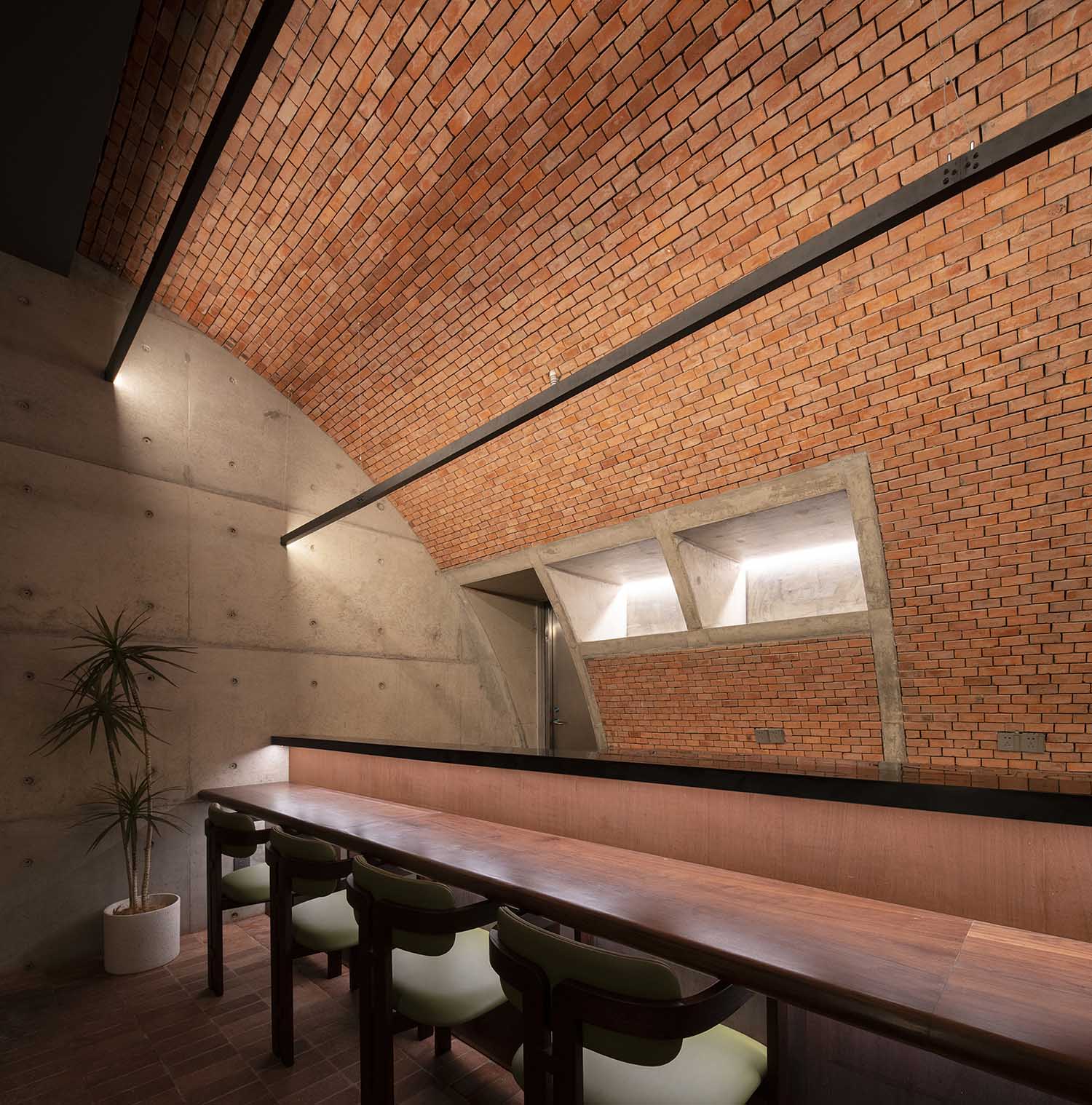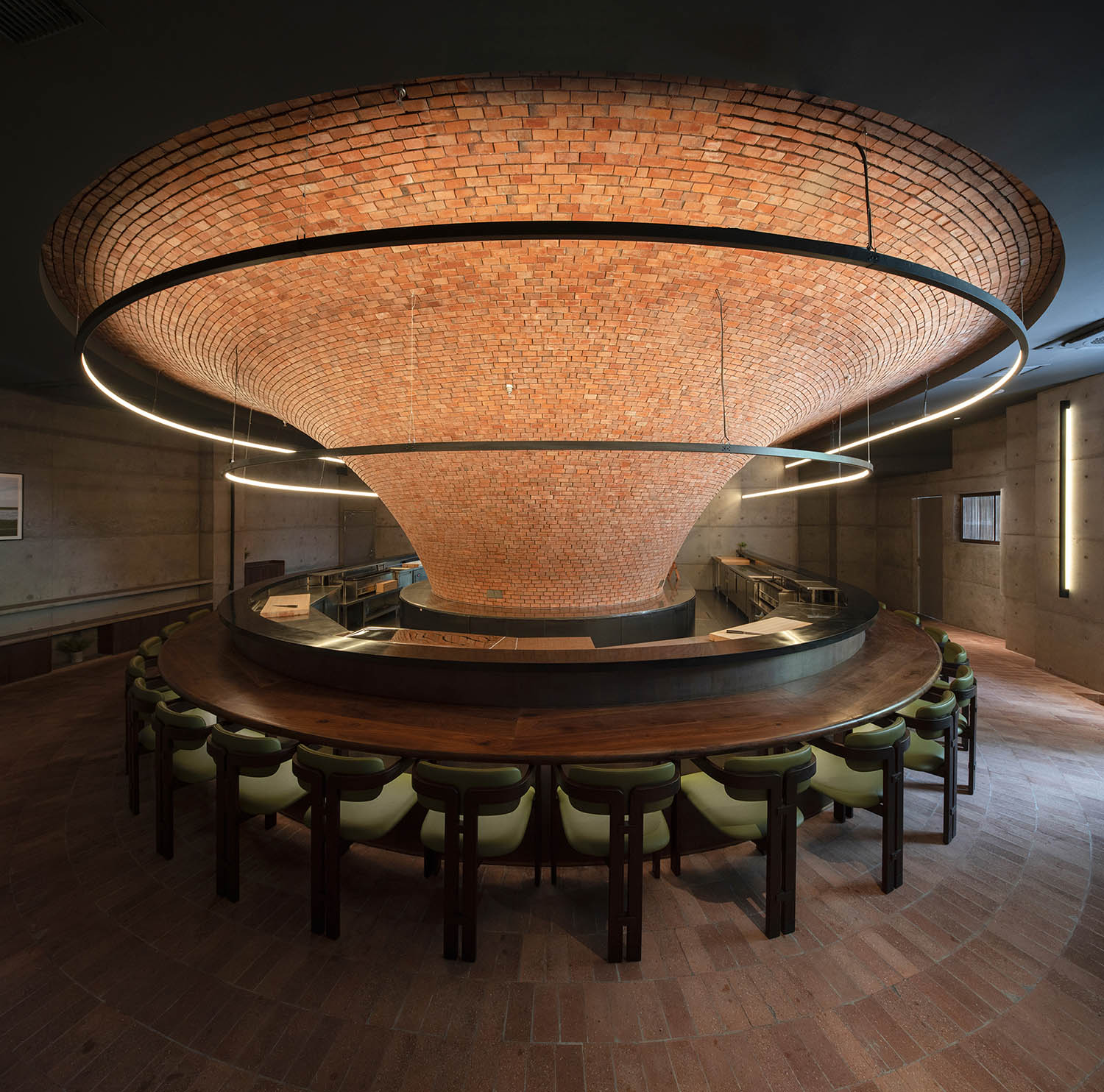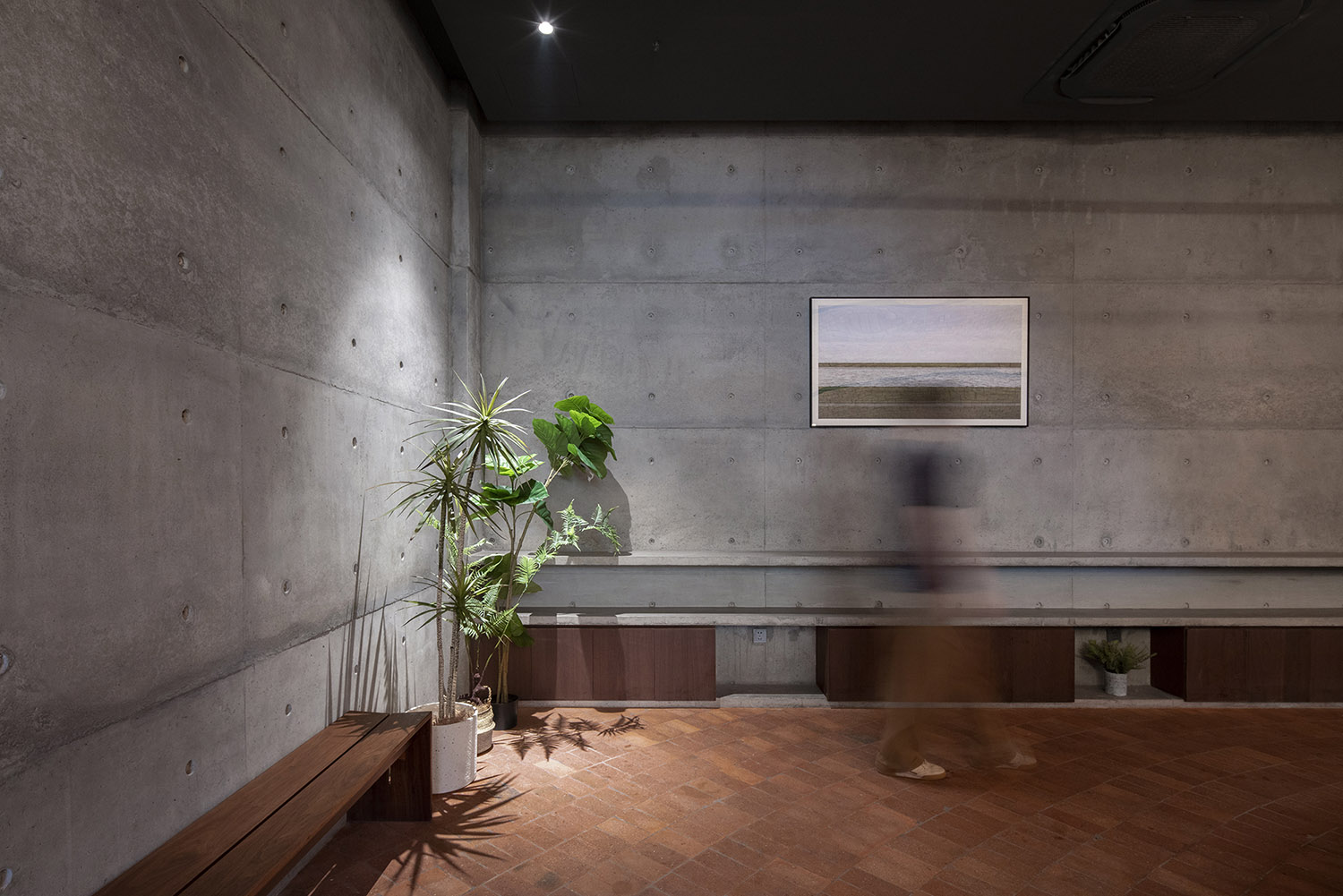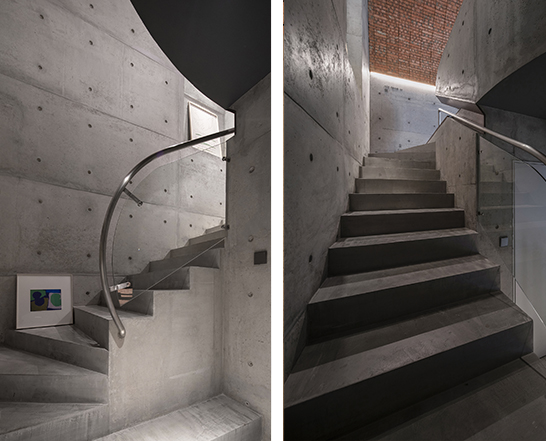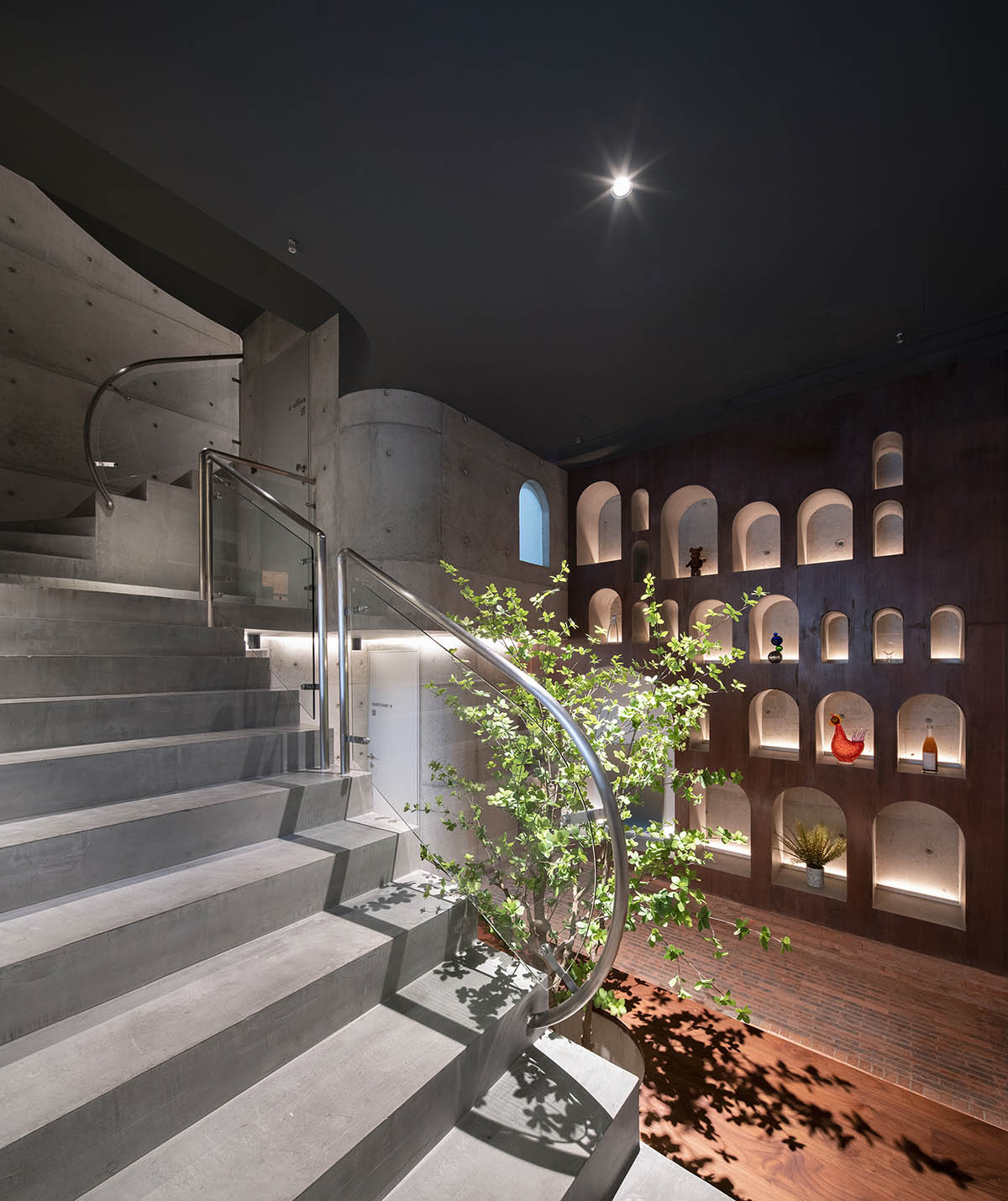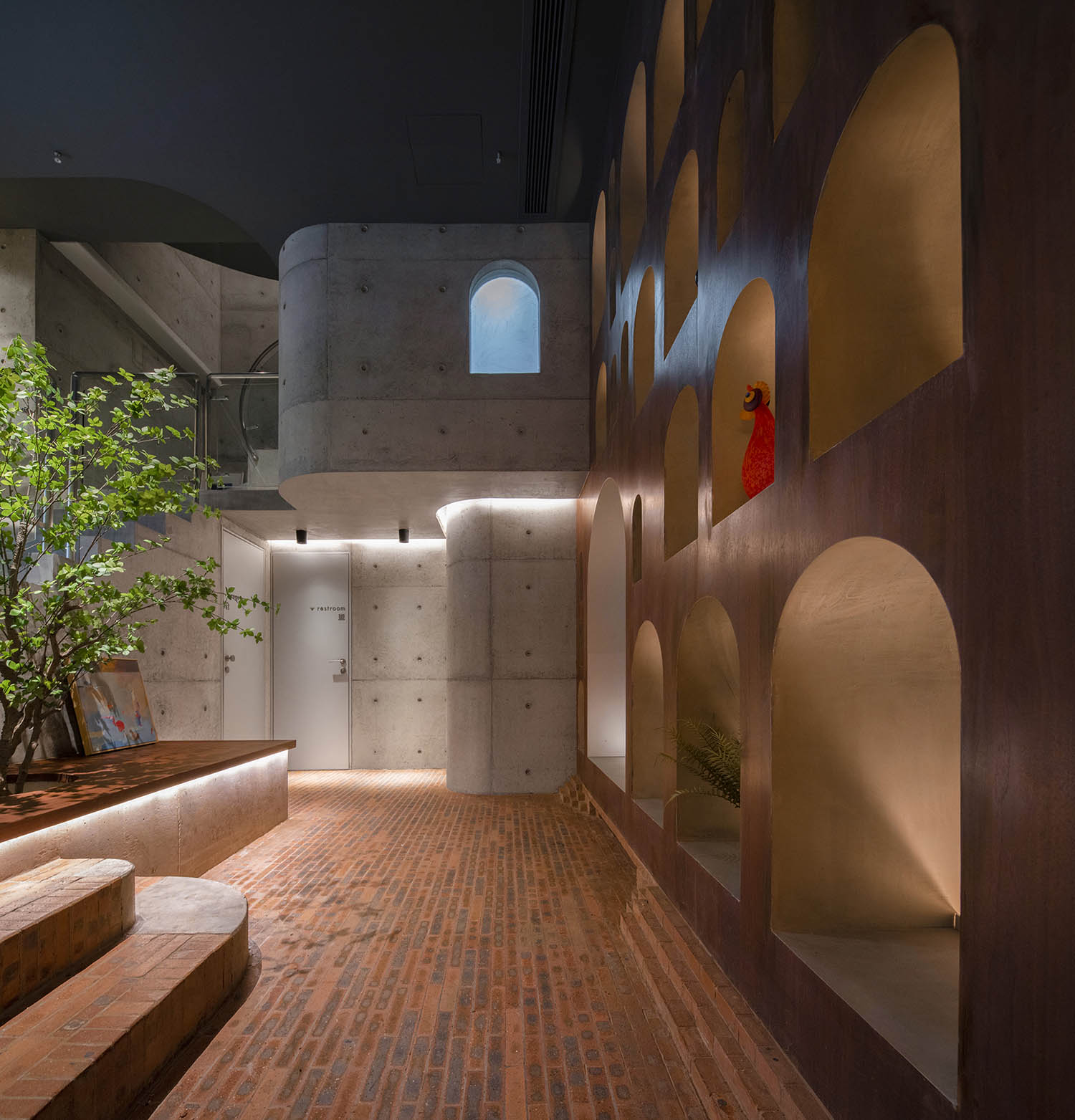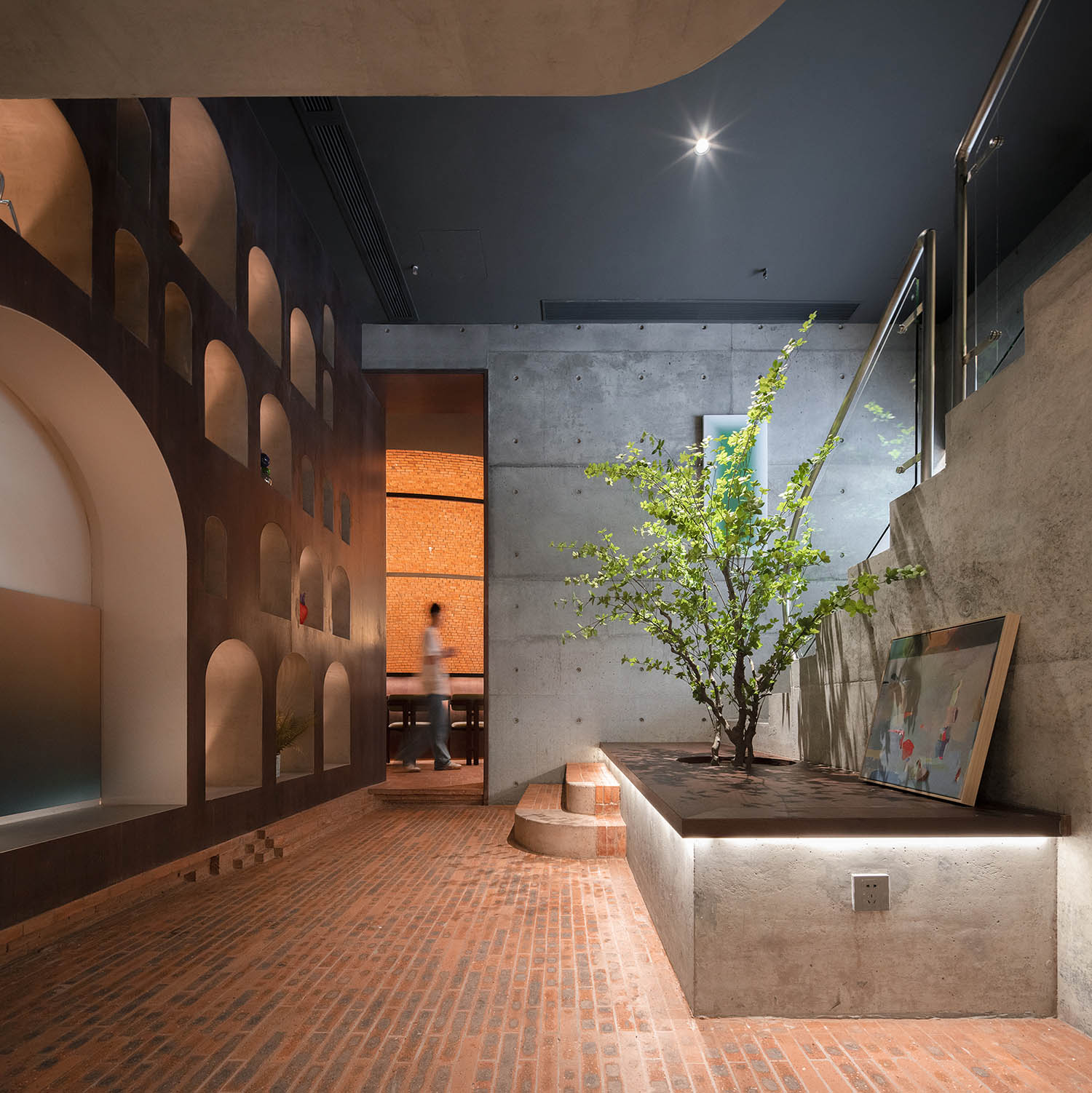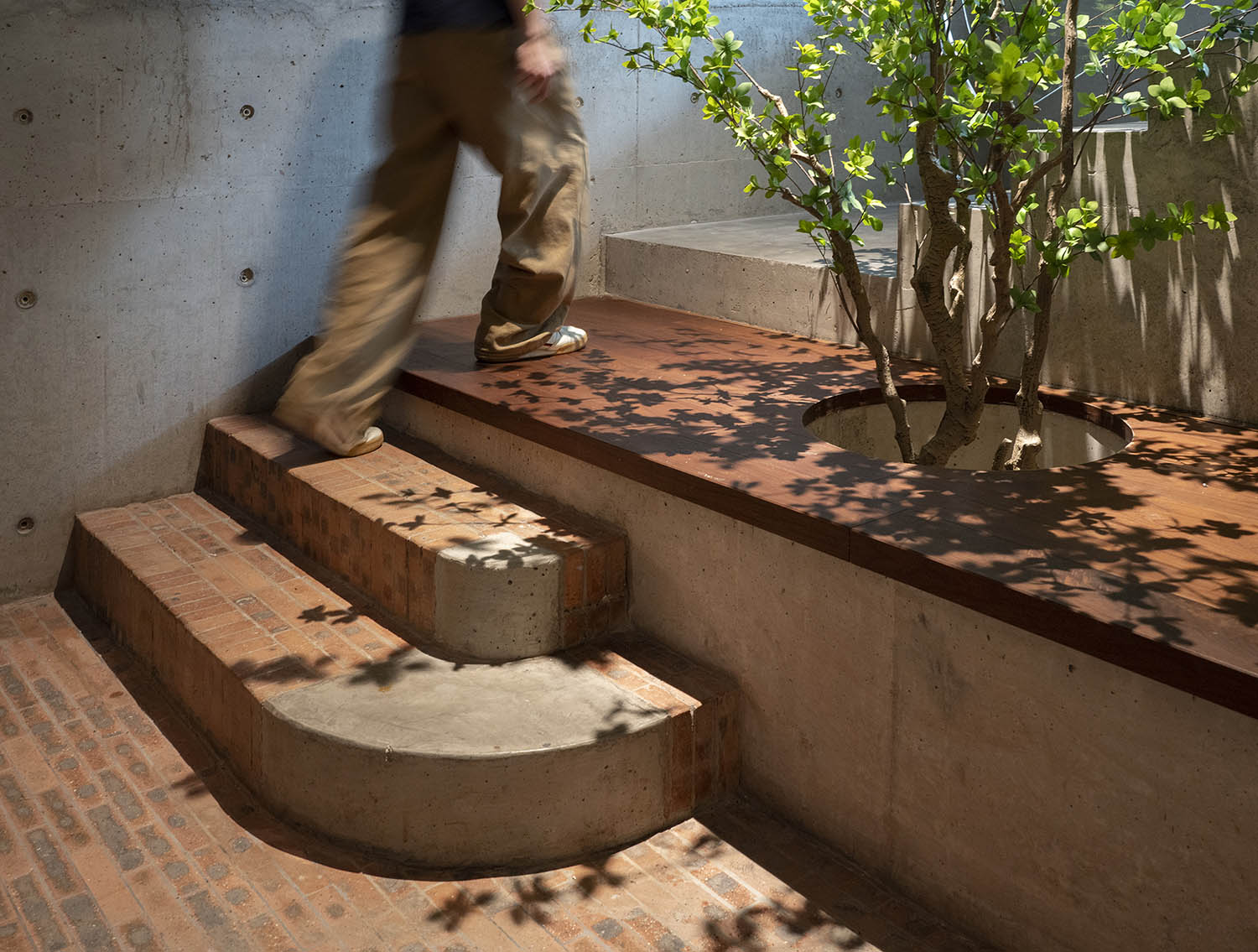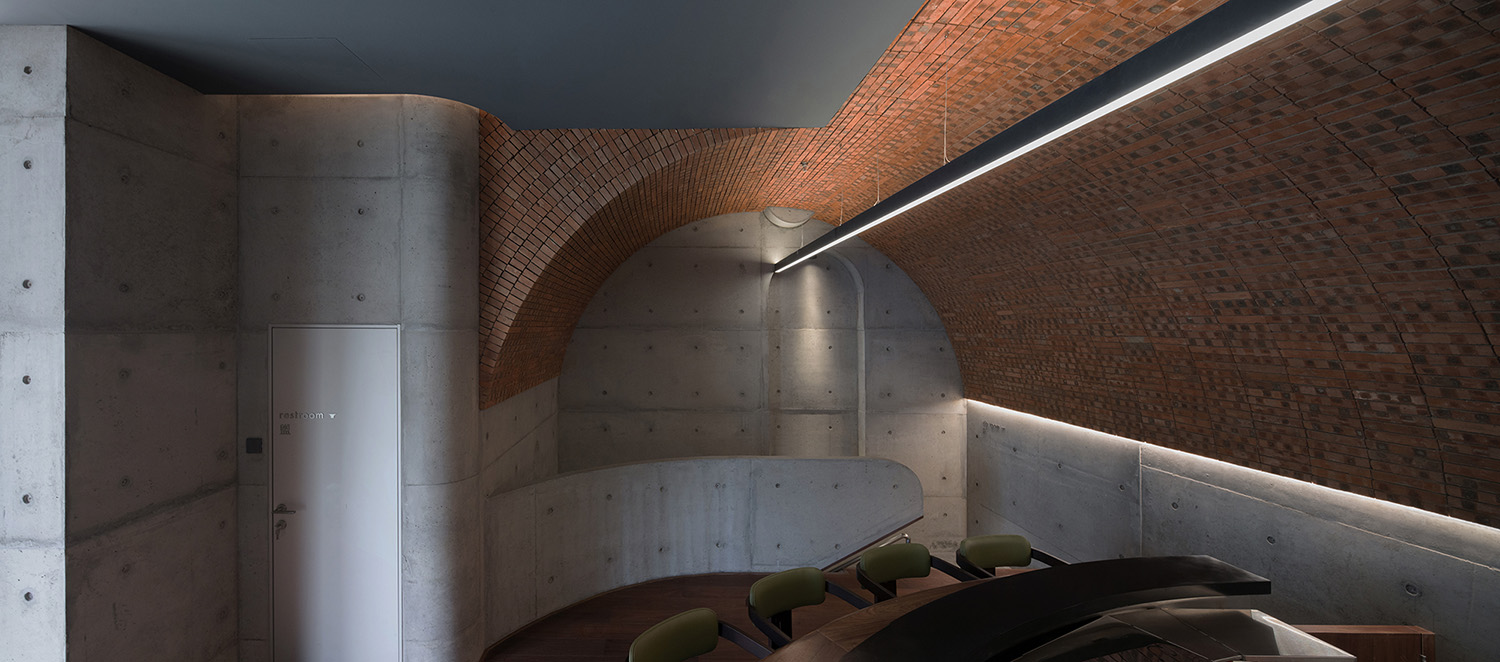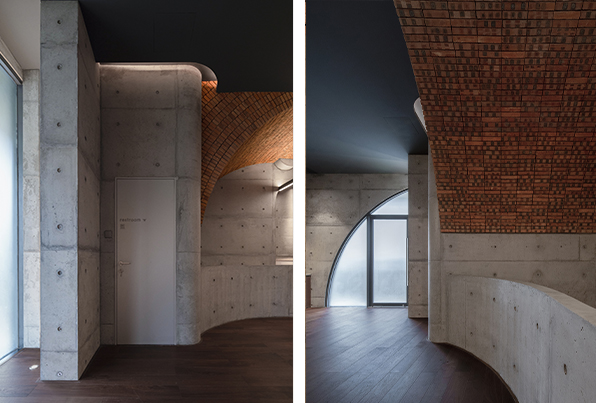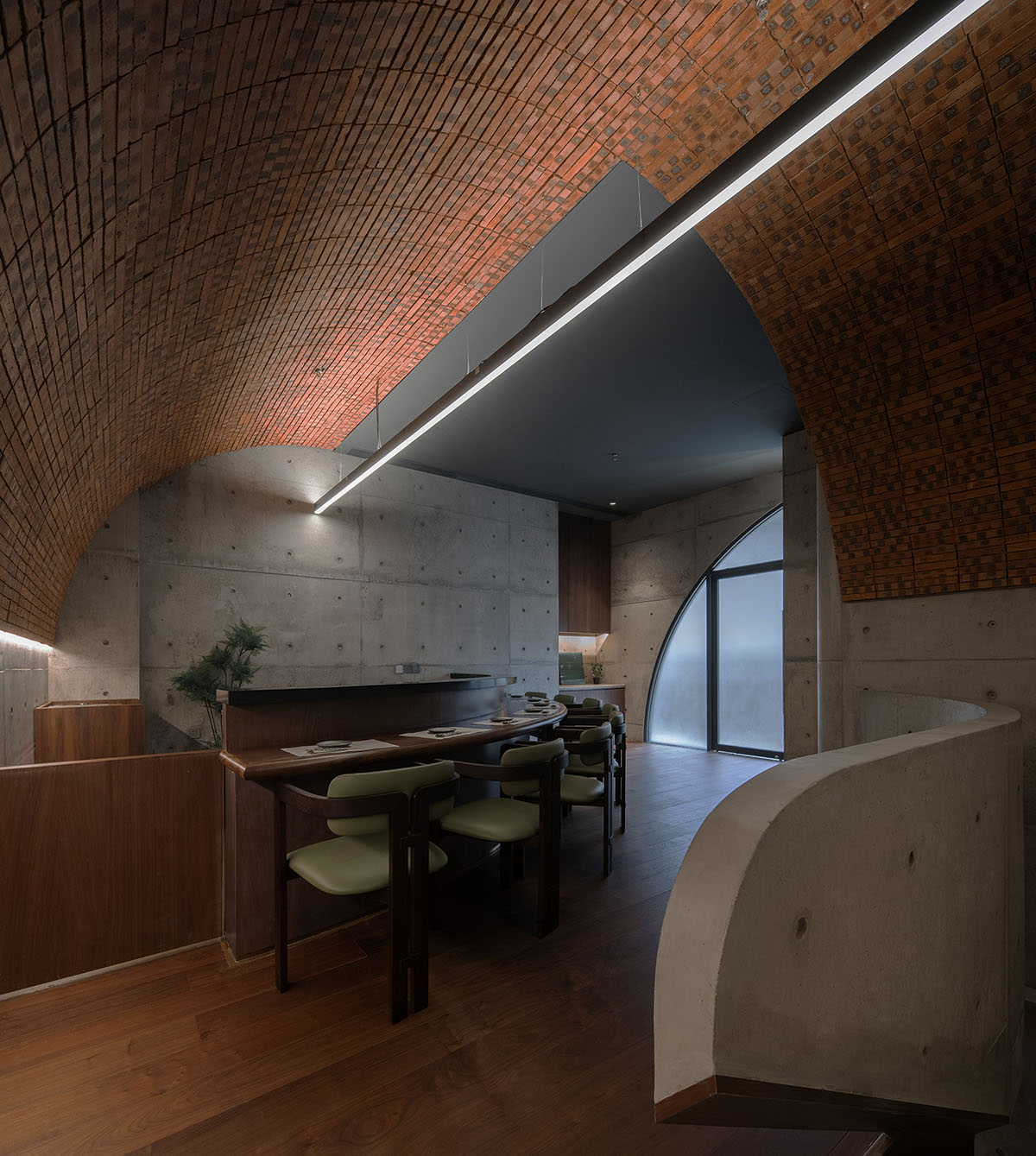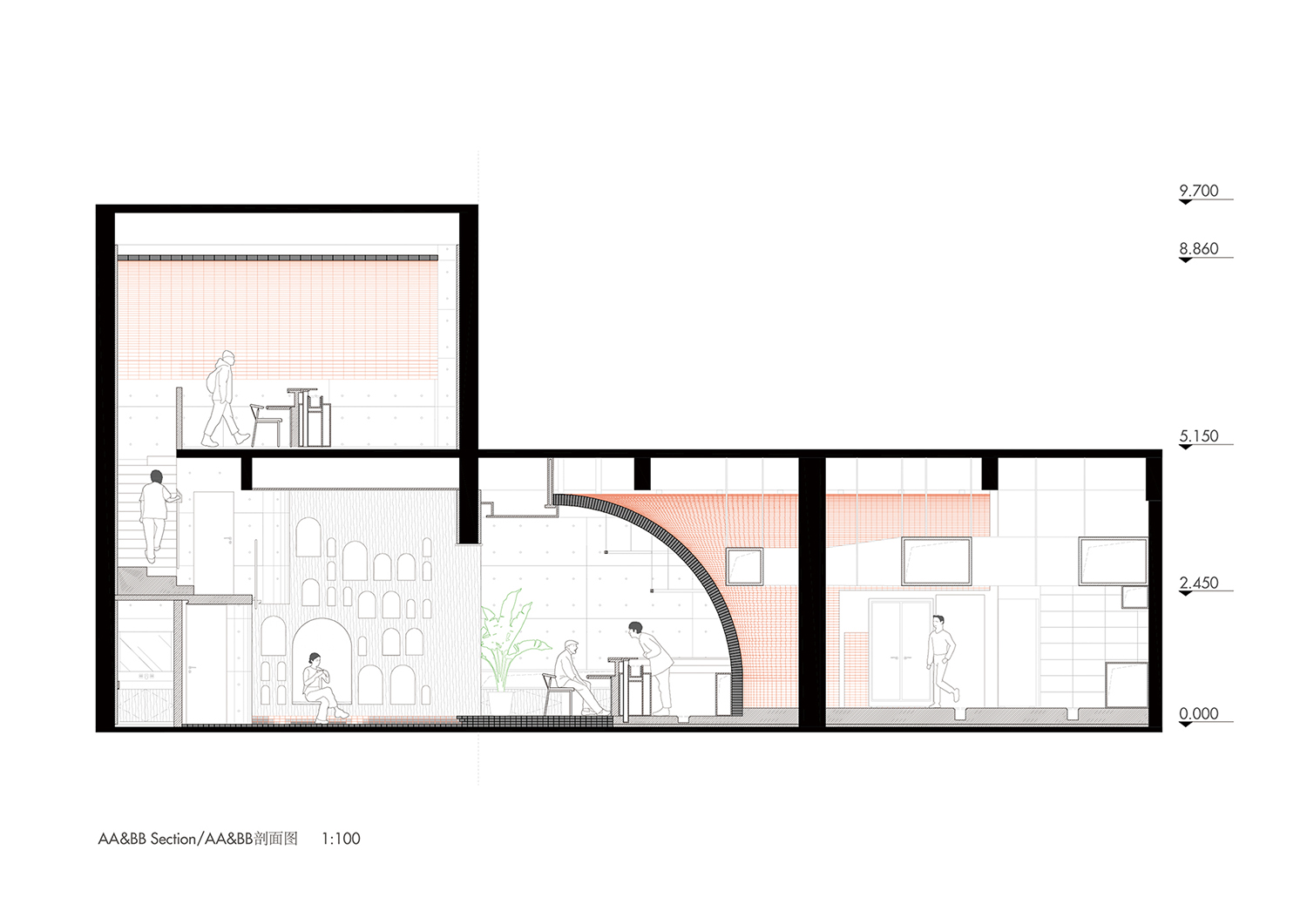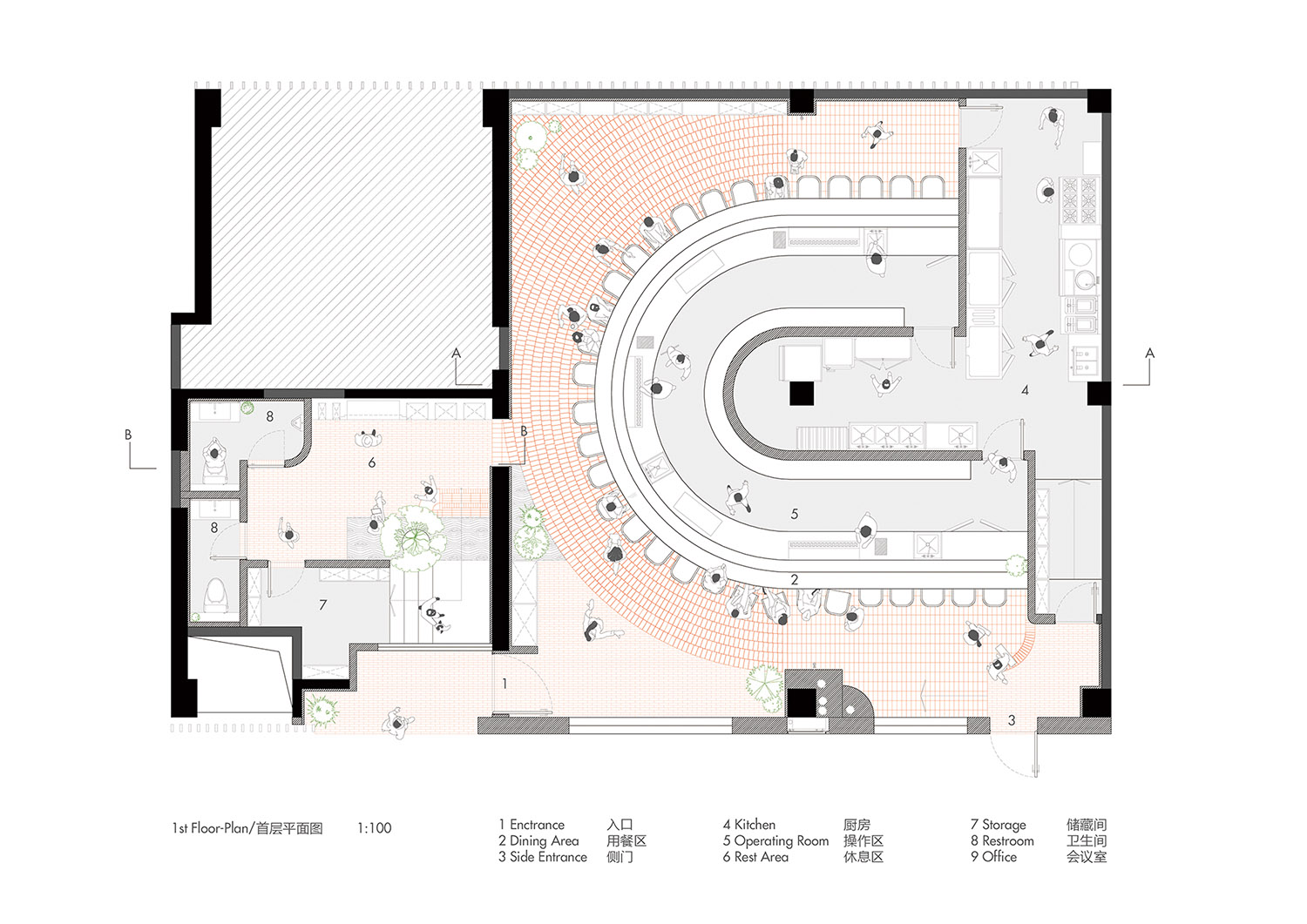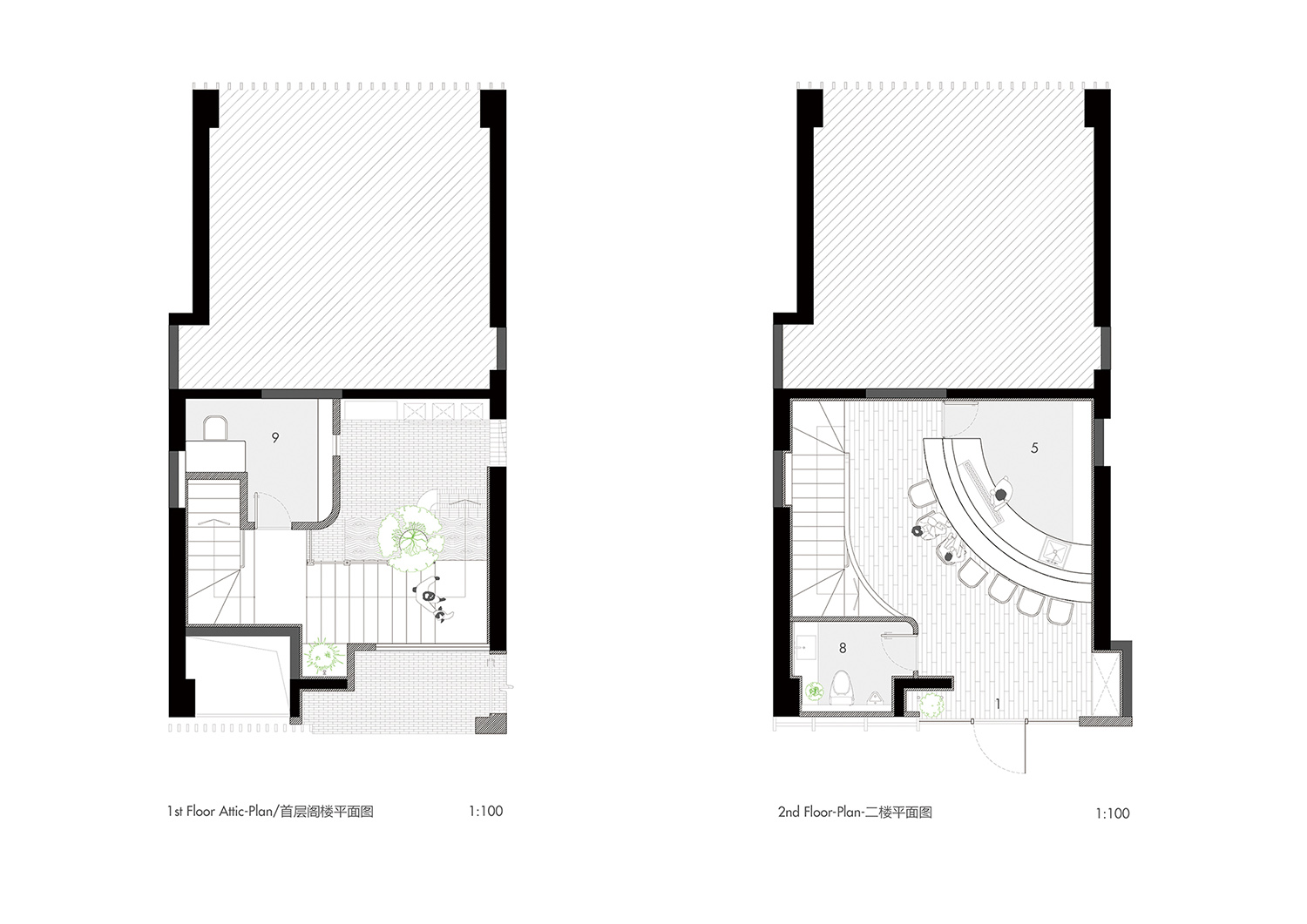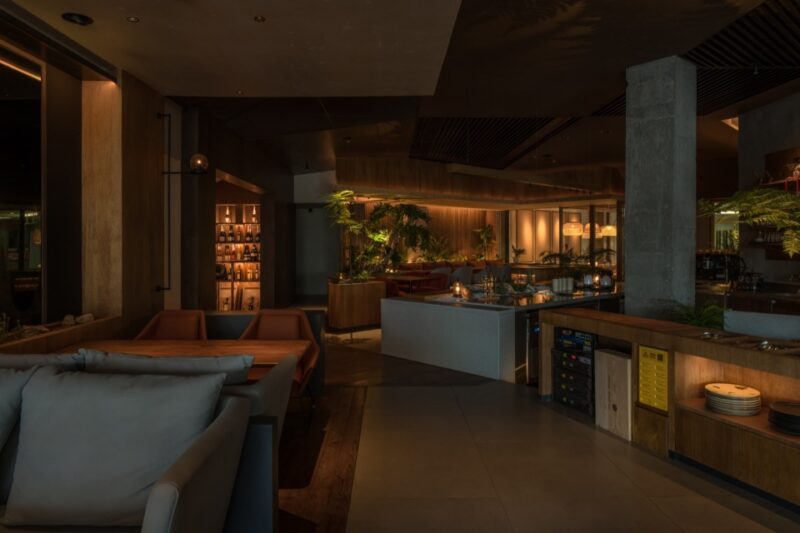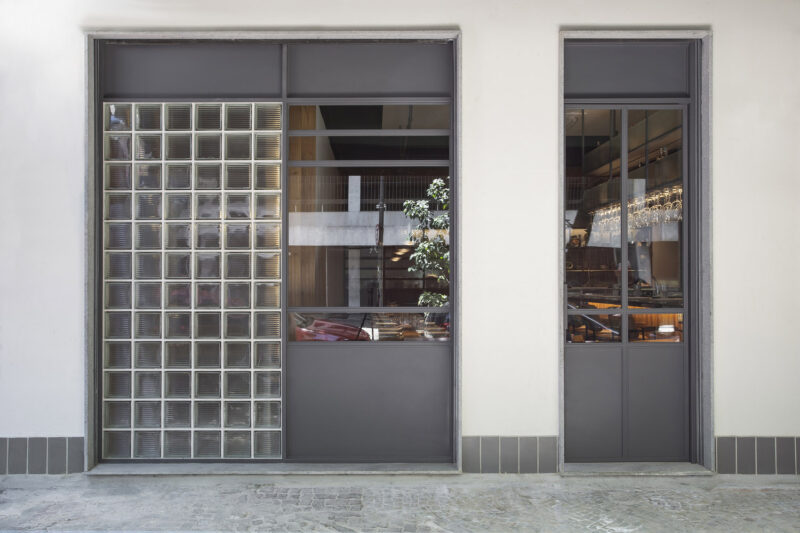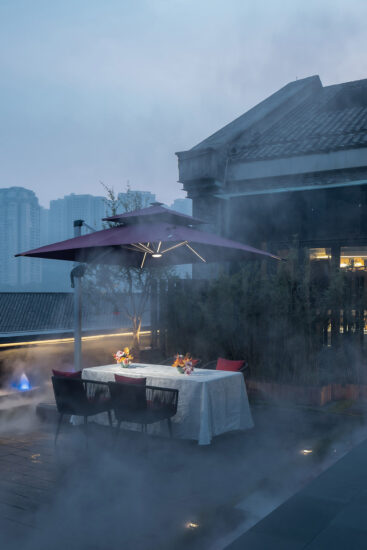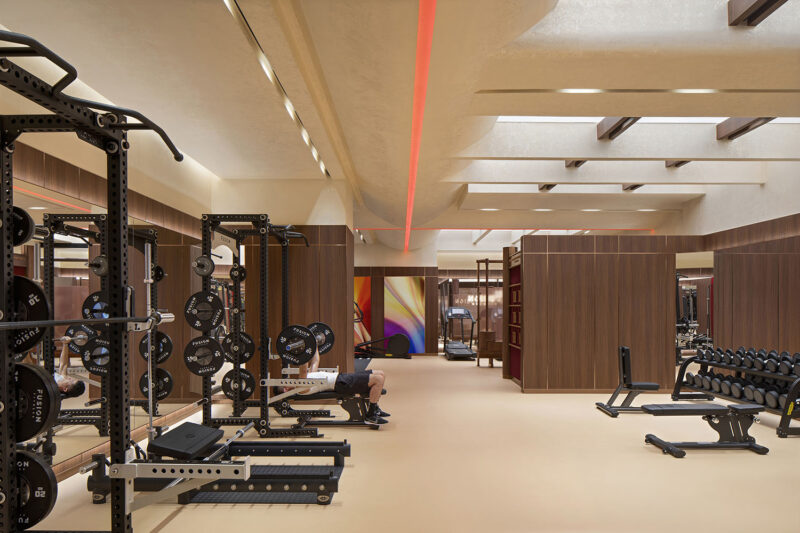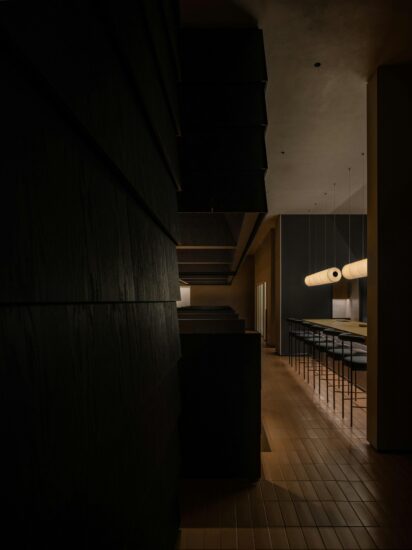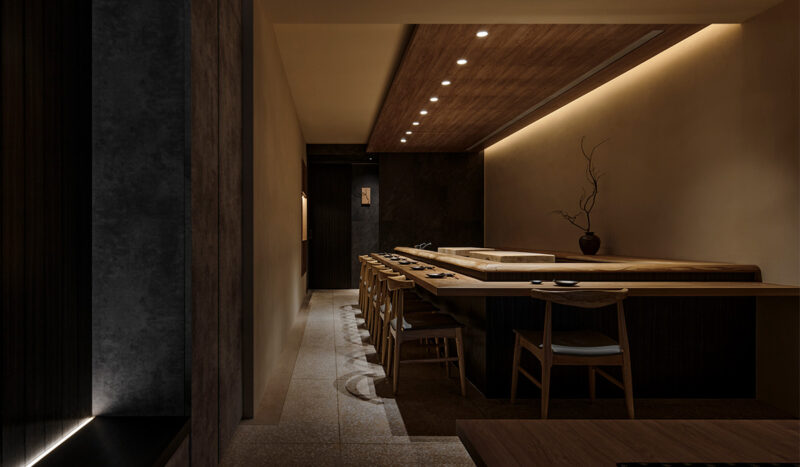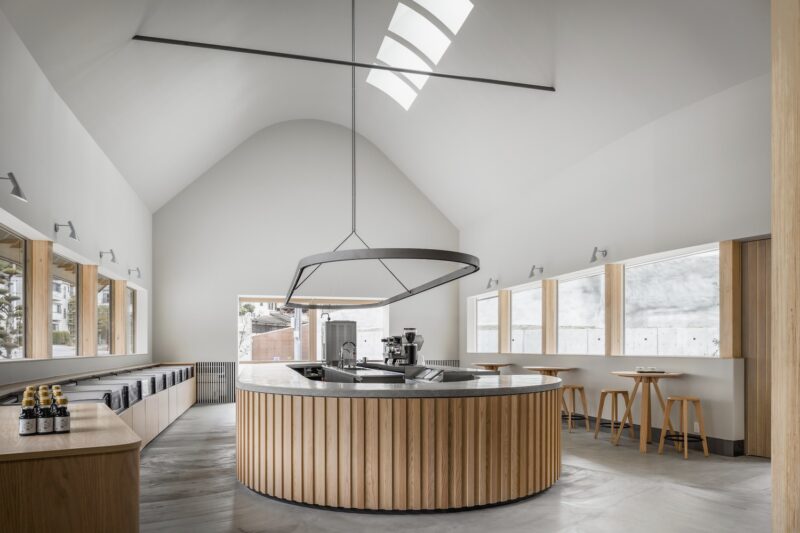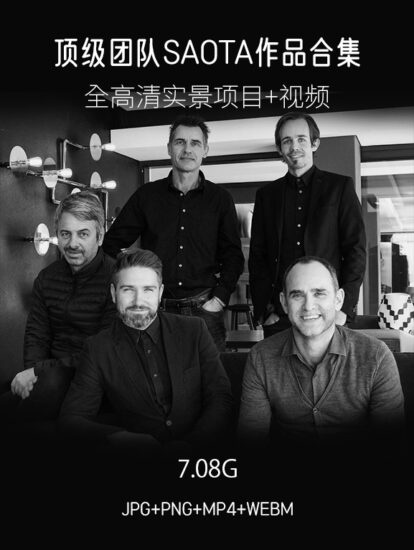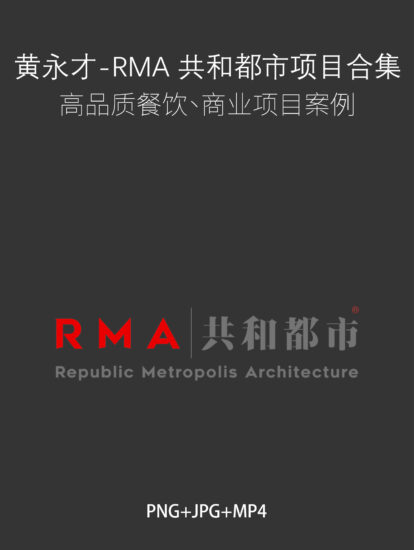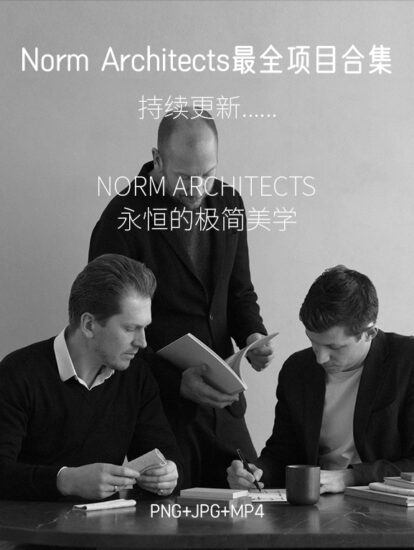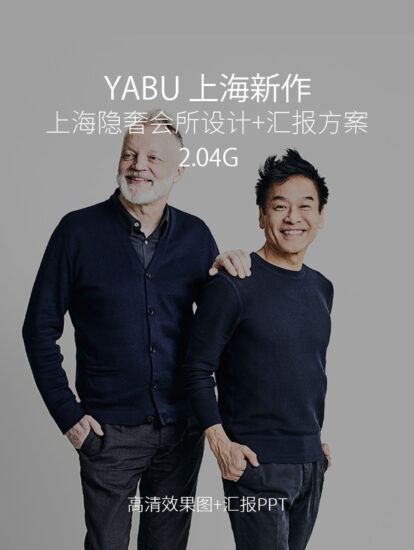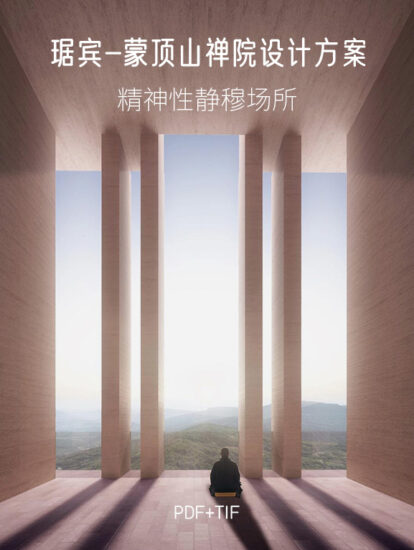一場關於就餐形式對空間營造的探討
飲食作為一種無法替代的現實體驗,由裏至外影響著人們的生活,同時也作為重塑商業空間的重要線索之一。
Food has always been an irreplaceable reality, influencing people’s daily lives from the inside out and acting as a critical clue to reshaping commercial spaces.
不同的餐飲類別、就餐形式與烹飪方法,也構成了不同的餐廳接待體驗,在大人兒工作室最新完成的Biiird日式燒鳥店中,設計團隊對餐飲形式該如何作用於空間,展開了別出心裁的探索。
The characteristics of the ingredients and cooking methods of each type of food and drink interact with the form of dining, combining many intrinsic factors to create a variety of dining experiences. In this project, bigER club design experimented with how Yakitori as a form of dining can be used to create the space.
∇ © 溫家亮 Photo by Wen Jialiang
何謂“燒鳥”Yakitori? What is “yakitori”?
“燒鳥”起源於日本街頭的“燒鳥攤”,後因廣受歡迎逐漸轉變為“燒鳥店”,下班後食客們在炭火前聽著燒烤的劈啪響聲,在大口喝酒、大口吃肉、與同行友人或料理人的閑聊中,感受市井的溫情體驗。
The “yakitori stalls” that populated the streets of Japan transformed into “yakitori restaurants”, but what remained unchanged was their relaxing, urban atmosphere – listening to the crackling in front of a charcoal fire after work, and the warmth of the experience of drinking and eating in front of a crackling fire.
∇ © 溫家亮 Photo by Wen Jialiang
近年,隨著消費升級和細分化,在國內曾作為居酒屋附屬品的“燒鳥”,開始逐漸獨立出來,單獨成店。
In recent years, Yakitori, once a subsidiary of Izakaya in China, has gradually become a branch of its own as consumption has escalated and become more segmented.
01 空間的產生 Generation of space
一直以來,飲食作為一種無法替代的現實體驗,由裏至外影響著人們的生活,同時也作為重塑商業空間的重要線索之一。每種餐飲類別的食材特性、烹飪手法都與就餐形式互相影響著,結合諸多內在因素,形成各式各樣的餐飲空間類型,並發展出獨特的“儀式感”,甚至形成某種餐飲文化。
Food has always been an irreplaceable reality, influencing people’s daily lives from the inside out and acting as a critical clue to reshaping commercial spaces. The characteristics of the ingredients and cooking methods of each type of food and drink interact with the form of dining, combining many intrinsic factors to create a variety of dining space typologies, developing a unique sense of “ritual” and even a particular dining culture.
∇ 傳統日式餐廳的就餐氛圍,圖片來源:unsplash.com
Dining atmosphere of a traditional Japanese restaurant, image from unsplash.com
例如圍合而坐的重慶火鍋和東北鐵鍋燉,餐桌(灶台)與鍋本身一定程度上承載了廚房的部分功能,使就餐與烹飪相互交織於食客之間,偶然地互助,你來我往間造就出一種社交方式;又如日本一蘭拉麵,座位圍繞著廚房一字排開,且有隔板將食客分隔開來,同時座位麵前的出餐口作為廚房的直接延伸,確保了以“秒”作為烹飪計算單位的高品質與標準化的出品。單人單桌單品的“去社交、去眼神”的用餐方式,讓人終於可以安靜下來專注享受一碗拉麵。
For example, in the Chongqing hot pot and the Northeastern iron pot stew, the dining table (stove) and the pot itself take over some of the kitchen functions so that dining and cooking are intertwined between diners, creating a form of social interaction between users.
At Ichiran Ramen in Japan, seating is lined around the kitchen, with partitions separating diners. The spout in front of the seats is a direct extension of the kitchen, ensuring high quality and standardised production in “seconds”. The partition can be removed if two people are travelling together, but this is not commonly done. The “no socialising, no eye contact” style of dining at a single table with a single dish allows people to finally settle down and concentrate on enjoying a bowl of ramen.
∇ 外立麵 Facade
Biiird日式燒鳥店作為Sushi Gin旗下的子品牌,位於深業中城3號樓首層。大人兒工作室對這個不足300平的場地進行了大量分析,此次的設計不僅著眼於空間和材料的研究,同時,對於“燒鳥”作為一種餐飲形式該如何作用於空間,進行了多種嚐試。
Biiird Japanese Yakitori, a sub-brand of Sushi Gin, is located on the first floor of Block 3 of SKY PARK. The bigER club design studio analyses the site with less than 300 square meters. The design not only focuses on the space and materials but also experiments with how Yakitori as a form of dining can be used to create the space.
02 回應城市空間 Responding to urban space
場地所處的商業區擁有統一的店鋪立麵,玻璃作為統一的立麵材料為空間帶來了一致的通透感。穿過商業區的中庭,玻璃立麵所營造的通透感被一排比例不得當的裝飾性廊柱所阻隔。
The commercial area where the site is located has a unified glazed façade providing a consistent sense of permeability to the space. The permeability created by the glass façade is interrupted by a row of inappropriately proportioned ornamental columns as one passes through the atrium of the commercial area.
廊柱之下自成空間,各商鋪的入口同一朝向,整齊劃一,卻和廊柱的排列毫無關係。個別入口甚至正對廊柱,導致入口缺乏退讓空間,門前作為柱廊與店鋪之節點僅有兩米寬。
Underneath the columns are individual spaces, with the entrances to the shops facing the same direction, neatly aligned but unrelated to the arrangement of the columns. Some of the entries face the corridors, resulting in a lack of space for the entrances, and the front door is only two metres wide as a junction between the halls and the shops.
∇ 低調開啟的店門 Entrance
步入項目場地,在10~13號鋪尚未打通相連之前,已經可以預見5米的建築層高將給空間帶來更多的設計潛力。空間相連方式並非單純的串聯打通,而是部分橫向相連,部分上下相連,既有開闊空間,也有受剪力牆所限,僅由一米寬門洞相連的獨立空間,更有局部升高的二層空間。
Step into the site, the design potential of the site (5m height) can be seen before shops 10 to 13 have been interconnected. The spatial connection was not simply by way of rows, but partly horizontally and partly up and down. There are open spaces and relatively separate spaces separated by a shear wall and connected only by a one-metre wide doorway. Even more, some of the spaces are double in height.
∇ 設計分析圖 © 大人兒工作室 Diagram © bigER club design
打通兩間6m*12m的店鋪後能得到一個方整的大空間,然而方正的場地中央有一根500mm*500mm的柱子。作為場地唯一一根獨立出來的柱子,不僅分割了空間,還極大程度地影響了整體的功能流線。
After knocking through the two 6m*12m shops, bigER club design was expecting an ample square space, but instead, they found a 500mm*500mm column in the middle of the square space. As the only separate column on the site, it not only divides the space but also dramatically affects the overall functional flow.
∇ 用餐區 Dining area
而本次設計任務的其中一項要求是所有的餐位都以吧台形式展開,意味著吧台的長度決定了客席數量,設計團隊嚐試了各種吧台的形式與可能性,以求得出最優解。
One of the design tasks was to have all the dining spaces in the form of a bar, which meant that the length of the bar determined the number of seats, so the design team experimented with various forms and possibilities of the bar to find the optimal solution.
∇ 設計團隊嚐試各種方案的吧台形式與空間可能性 © 大人兒工作室
The design team experimented with various forms and possibilities of the bar to find the optimal solution © bigER club design
03 不止於設計 More than design
經過對現場條件和功能需求的分析,設計師決定將用餐區和廚房置於帶有柱子的大空間,以用餐區圍繞著廚房,將廚房向內包裹,而柱子則收於廚房之中。從而,避免了柱子立在正中央的突兀感,使空間形成一個連續的半環狀,以此來增加視覺的連續性。更重要的是,提高了廚房與用餐區之間的效率。
After analyzing the site conditions and functional requirements, bigER club design decided to place the dining area and kitchen in the ample space with the columns, with the dining area surrounding and wrapping the kitchen inwards. In contrast, the columns are tucked away in the kitchen. This avoids the abruptness of a column in the middle of the space and creates a continuous semi-ring space, thus increasing the visual continuity. More importantly, the efficiency between the kitchen and the dining area has been improved.
∇ 操作區 Operation area
顯然,在滿足了客容量和主要空間的效率問題後,場地東側被廚房和用餐區兩個較大的功能分區幾乎占滿,剩下的衛生間、儲藏間、員工更衣室等麵積較小的服務空間需要巧妙利用現場調解,有機地融合為一個整體,組成一個置於一側的多功能“核心筒”(基礎設施、交通盒)。
While satisfied with the main spaces’ capacity and efficiency, the space’s eastern side is almost completely covered by the two larger functional divisions of the kitchen and dining area. The remaining smaller service spaces such as toilets, storage rooms and staff changing rooms need to be cleverly mediated on-site and organically integrated into one multifunctional ‘core’ (infrastructure and circulation core) placed on one side.
至此,“設計”算是“做完了”。但設計團隊不甘心停留在審美和解決問題、提升效率的層麵上。私人空間或許能通過某種策略釋出一定程度的公共性與社會性。
At this point, the “design” is “done”. bigER club design is not willing to stop at aesthetics, problem-solving and efficiency. Private spaces may be able to release a certain degree of social properties (publicness) through some strategy.
04 “談些主義” Talking about some “doctrine“
∇ 通往二層VIP包房的樓梯 Staircase to the VIP room
通過對功能空間的大分割,讓用餐區和“核心筒”彼此獨立但又局部相連,於是有組織地產生了更“有趣”的剩餘空間。在對空間可能性上,設計師試圖將一部分剩餘空間在非用餐時段重新激活,或許能成為新的社交場所和展覽空間。
By dividing the central functional spaces, the dining area and the “core” are independent of each other but partially connected, thus creating a more “interesting” residual space in an organised way. Regarding spatial possibilities, bigER club design has attempted to reactivate some of the remaining space during non-dining hours, perhaps as additional social spaces and exhibition spaces.
∇ 休息區
空間形態往往反映著社會形態,也體現出特定階段的生產關係和底層邏輯。人與空間、人與人、人與物的關係,隨著消費和娛樂在互聯網的空間賦能下不斷被重構,例如“網紅”空間在社交裂變的加持下,一定程度上滿足了商業空間的利益。
Spatial forms often reflect social forms, as well as the relations of production and underlying logic at a particular stage. The relationship between people and space, people and people, people and things, is constantly being reconfigured with the spatial empowerment of consumption and entertainment through the internet.
∇ 二層VIP包房 2F VIP room
這種滿足,在取得某些成效時,就會形成經驗,也會導致對“新”的探索被某種流行語境限製住。麵對商業空間這一個典型的矛盾體,我們既要尊重商業邏輯,解決問題,同時也要談些“主義”。
When achieved with some success, this satisfaction can lead to experience and the exploration of the ‘new’ being limited by specific popular contexts. As a typical contradiction in commercial space, we had to respect the commercial logic and solve the problem while discussing some “doctrine”.
∇ 施工過程 © 大人兒工作室 Construction process © bigER club design
∇ 剖麵圖 © 大人兒工作室 Section © bigER club design
∇ 平麵圖 © 大人兒工作室 Plan © bigER club design
項目信息
項目名稱:Biiird日式燒鳥
項目業主:深圳市木本餐飲管理有限公司
項目地點:廣東省深圳市福田區深業中城3號樓一層10-13號
項目麵積:274平方米
完工時間:2022年6月1日
設計範圍:立麵改造、室內設計、燈光、軟裝
設計公司:大人兒工作室(深圳市大夥兒設計有限公司)
主創設計師:卓俊榕&黃媛
項目攝影:吳嗣銘(除特別標注外)
Project name: Biiird Yakitori
Project client: Shenzhen Benmu Dining Management Ltd.
Project location: Floor1 10-13, block 3, Sky Park, Hongli-west Road, Futian district, Shenzhen, Guangdong, China
Project area: 274 square meters
Completion time: June 1, 2022
Design scope: facade renovation, interior design, lighting design, soft decoration design
Design company: bigER club design
Chief designers: Cheuk Chun Yung, Huang Yuan
Photographs: Wu Siming (unless otherwise noted)


